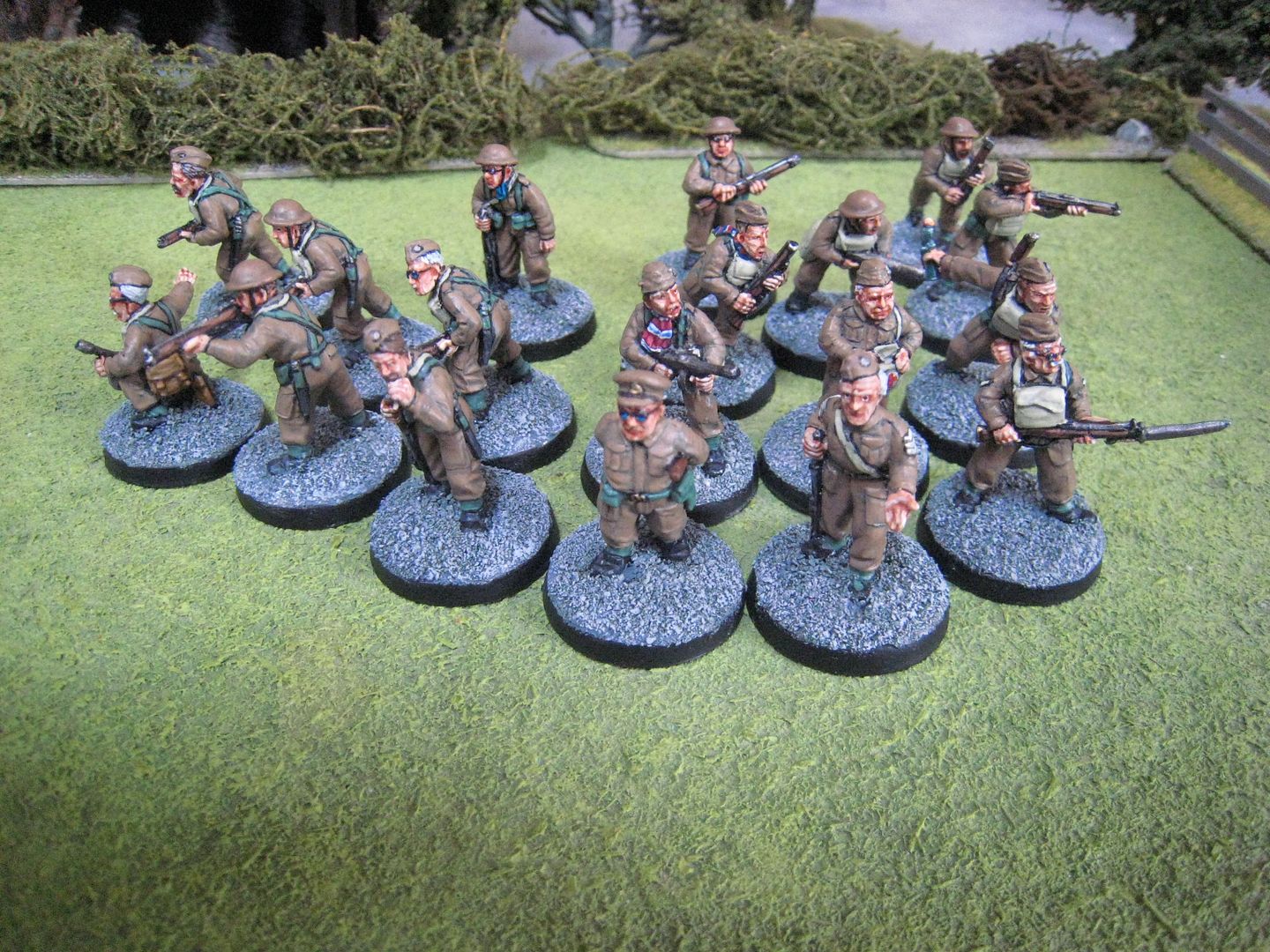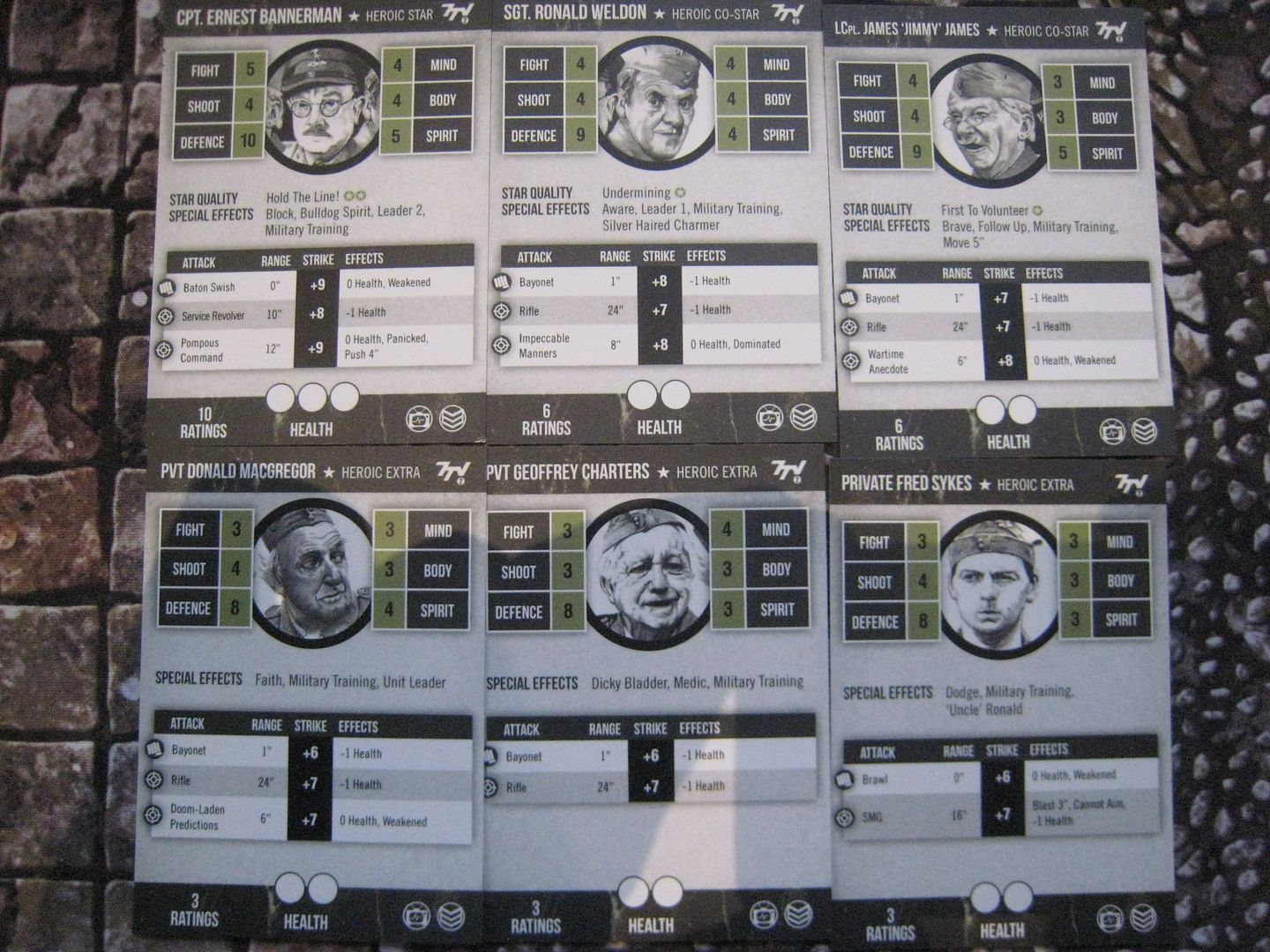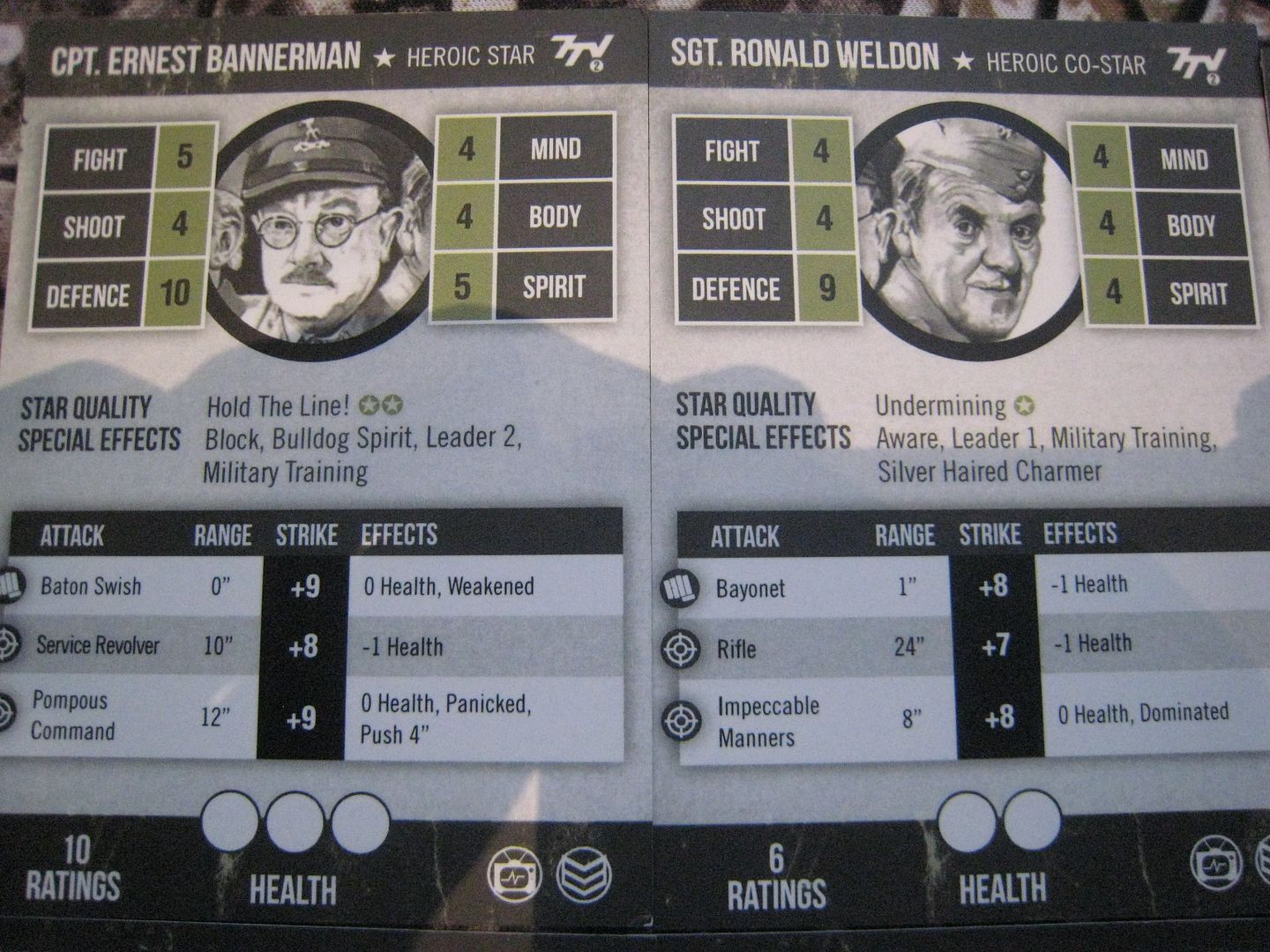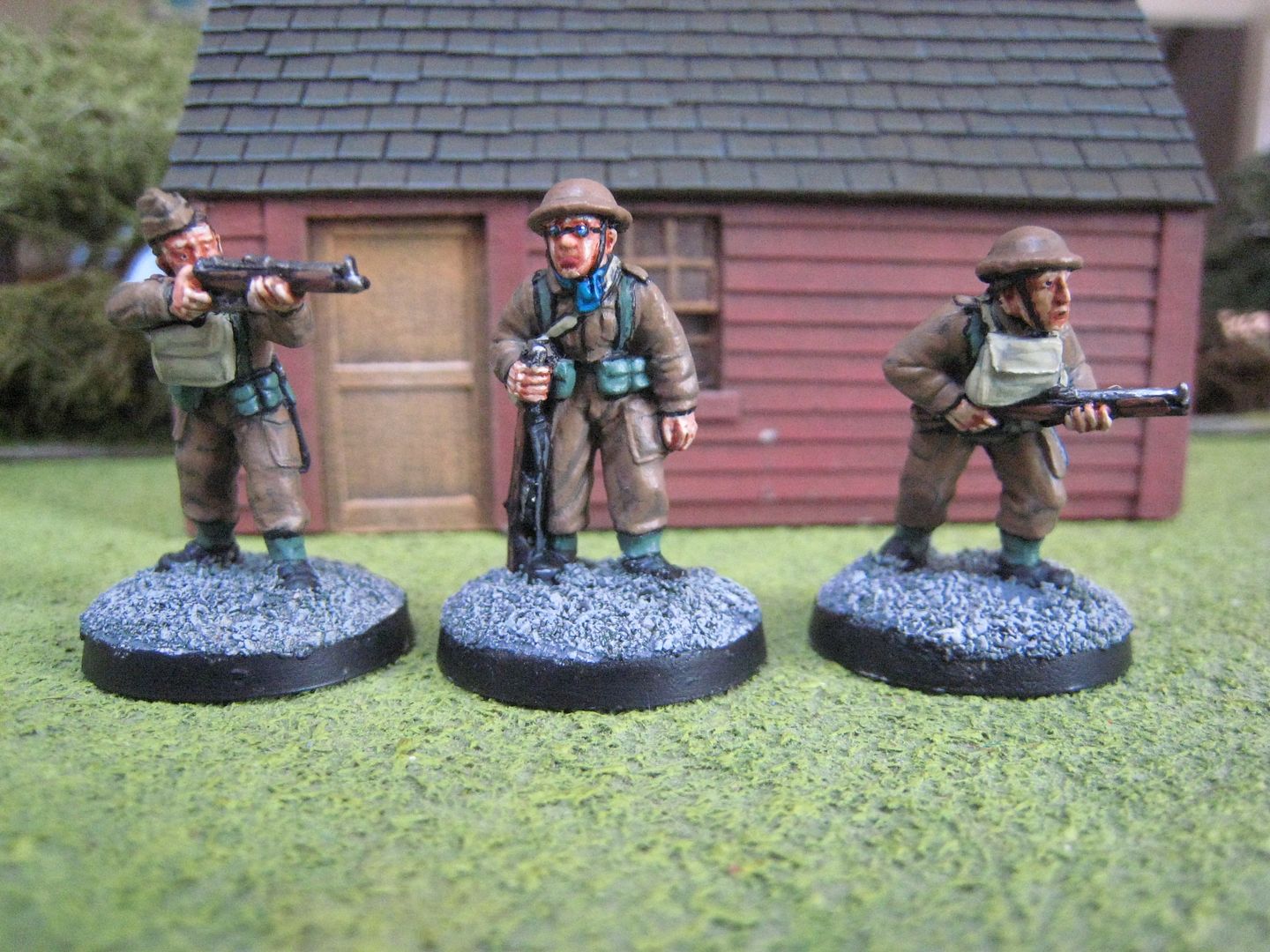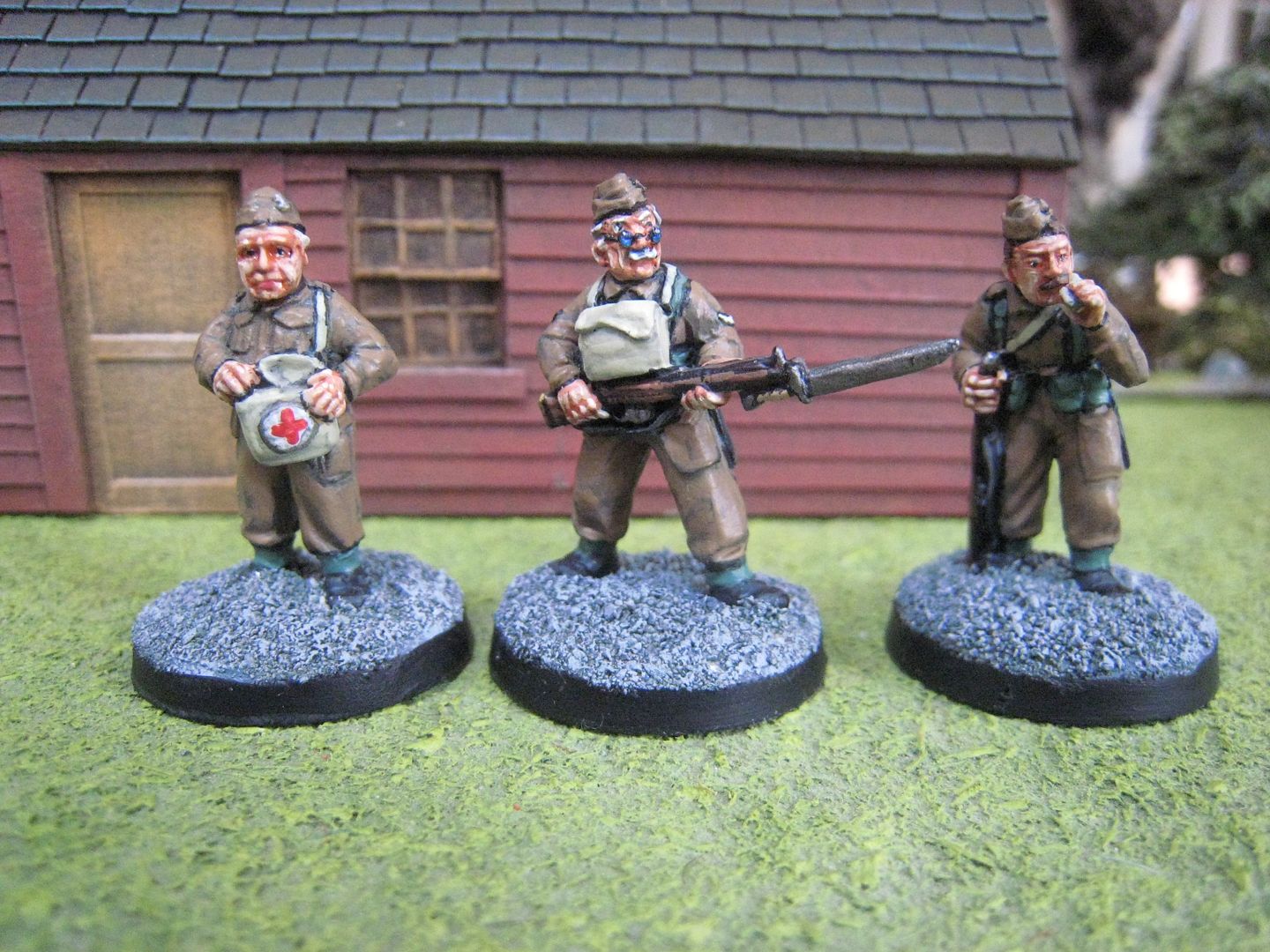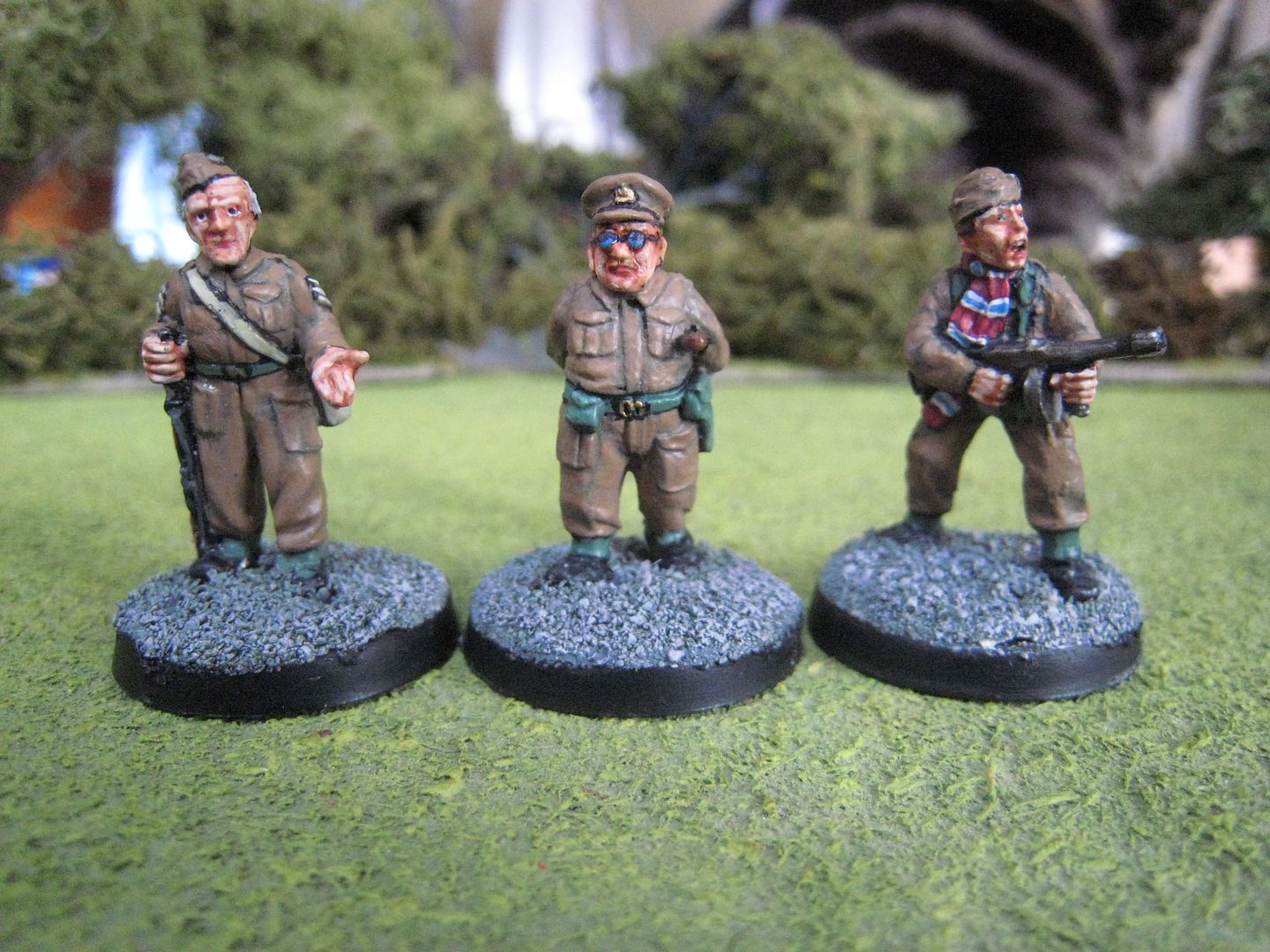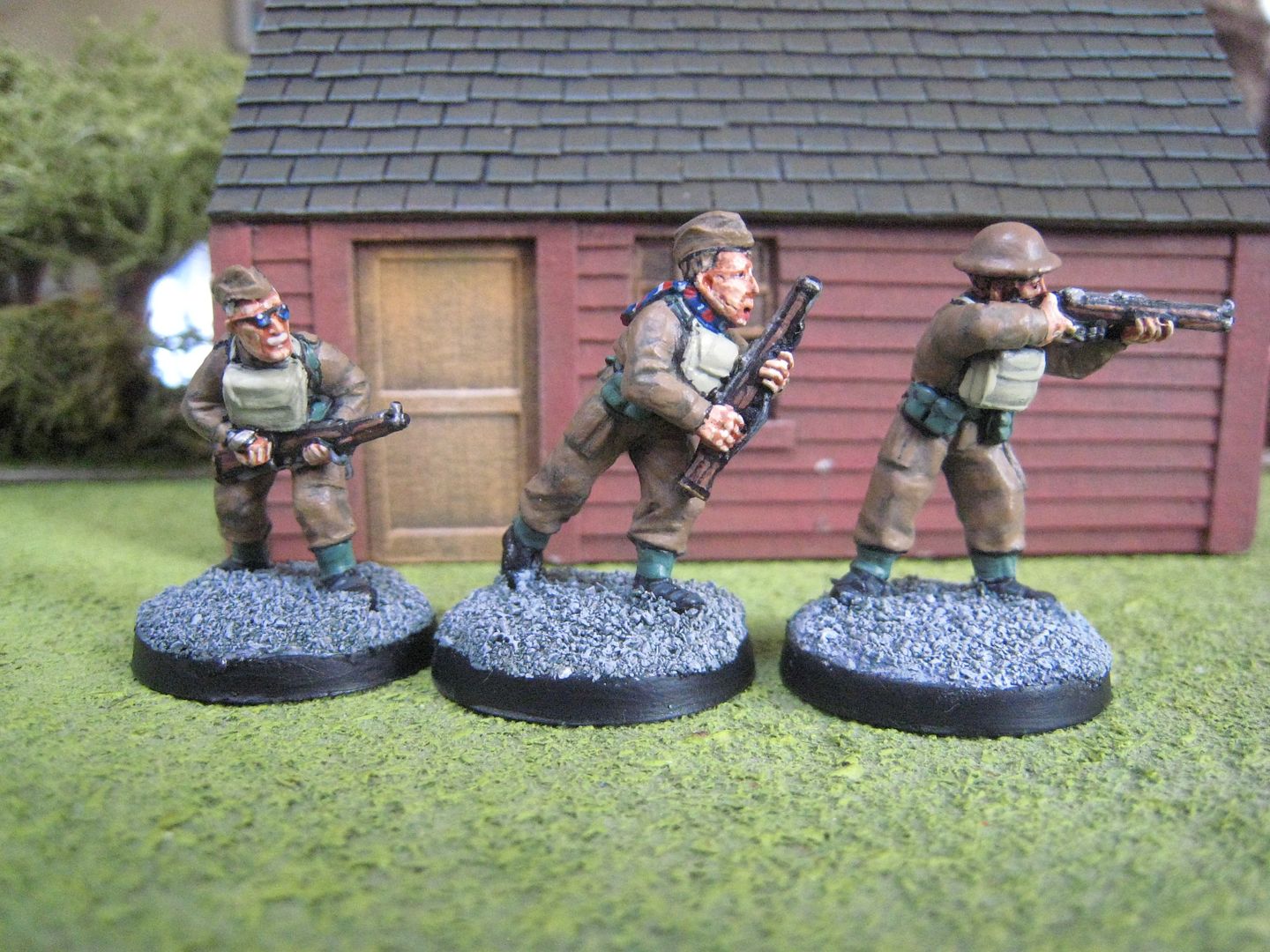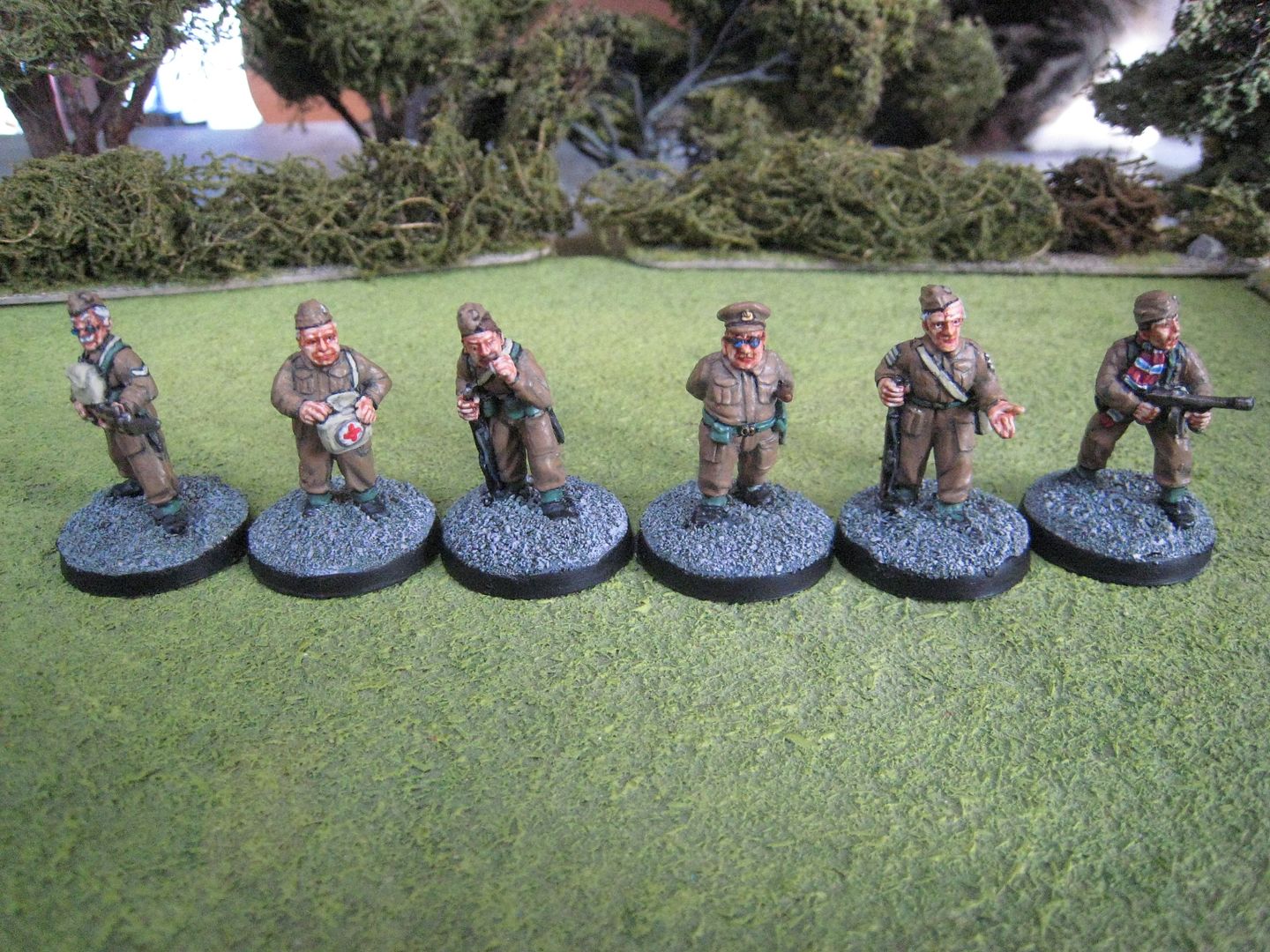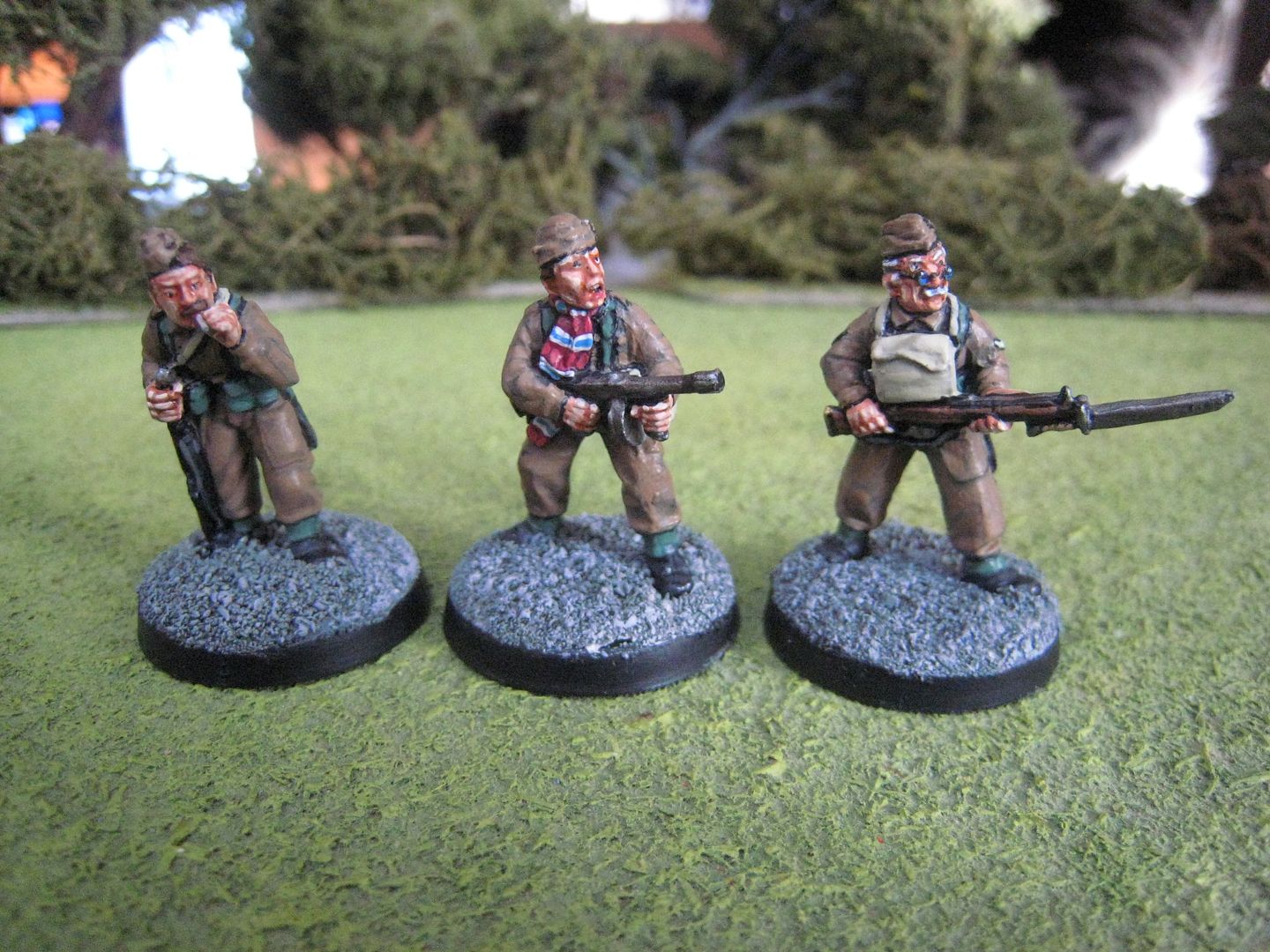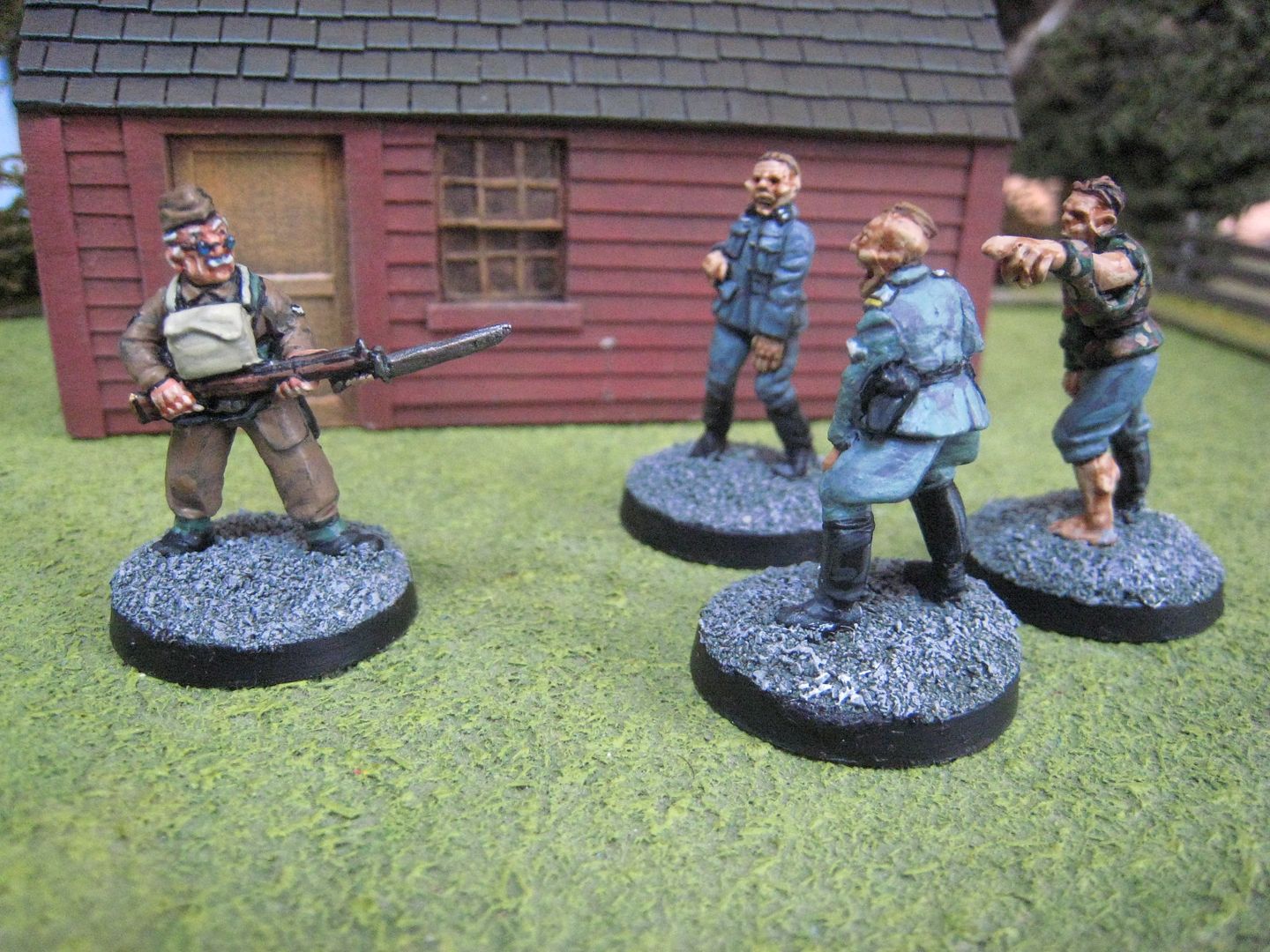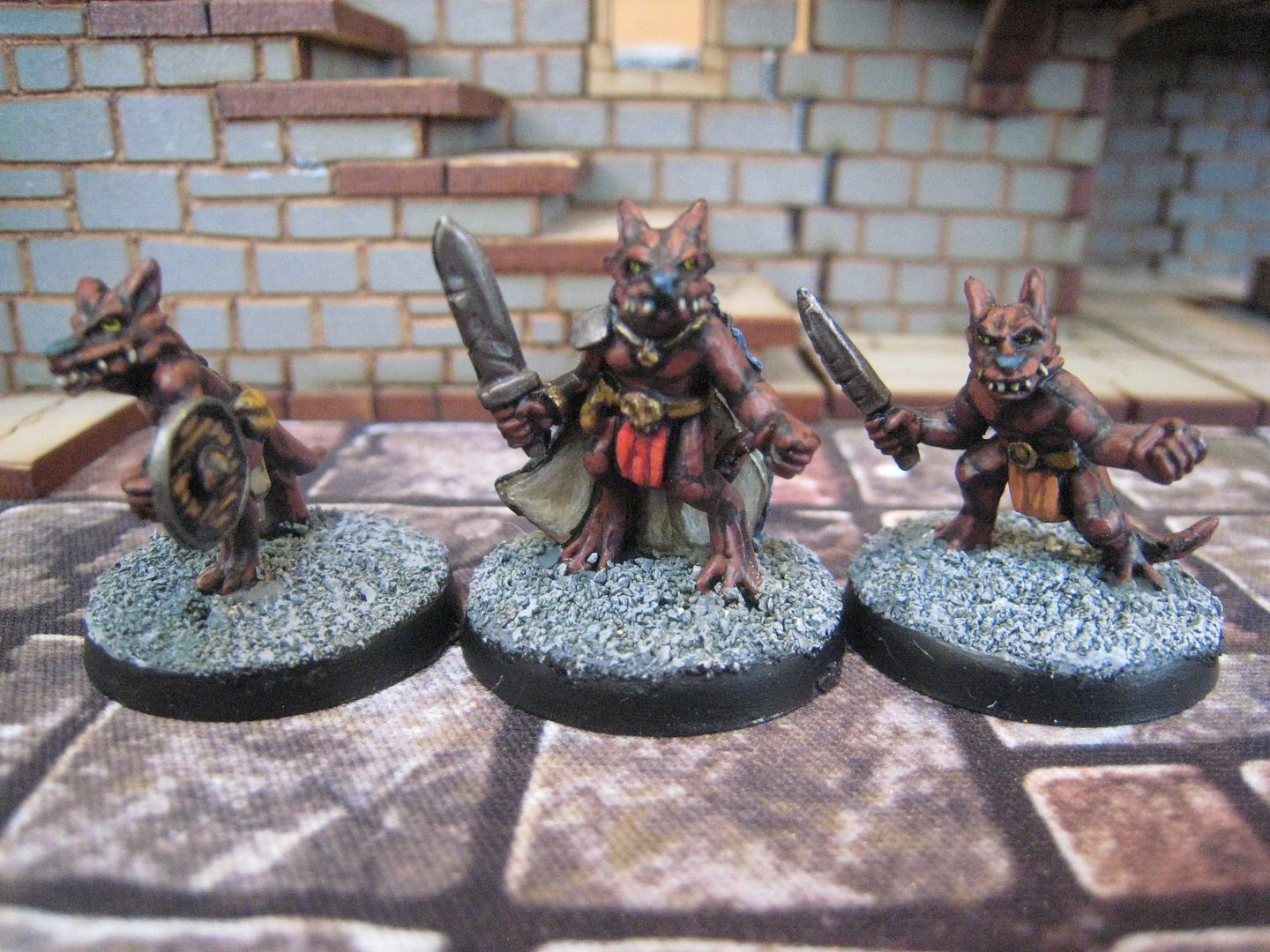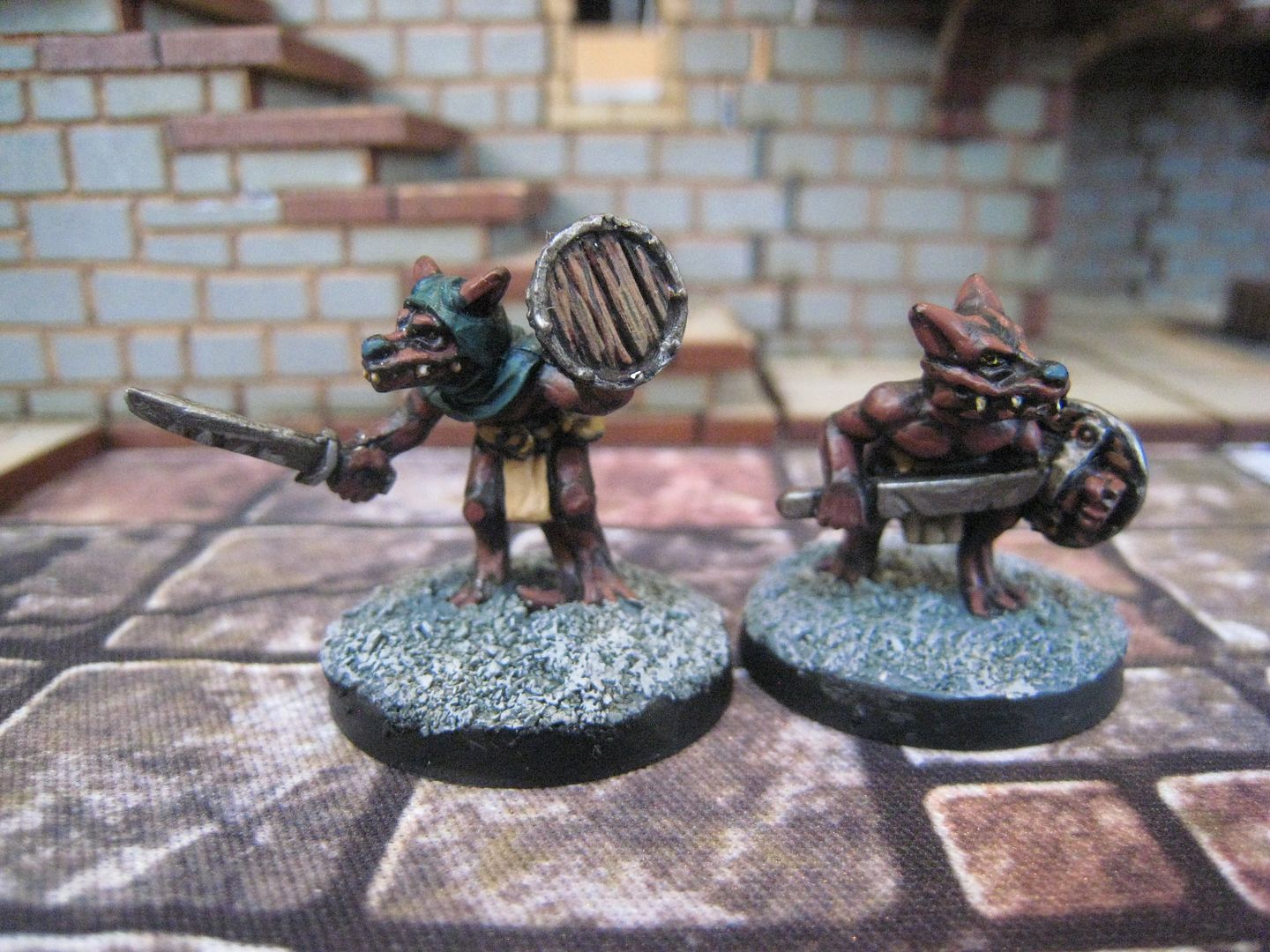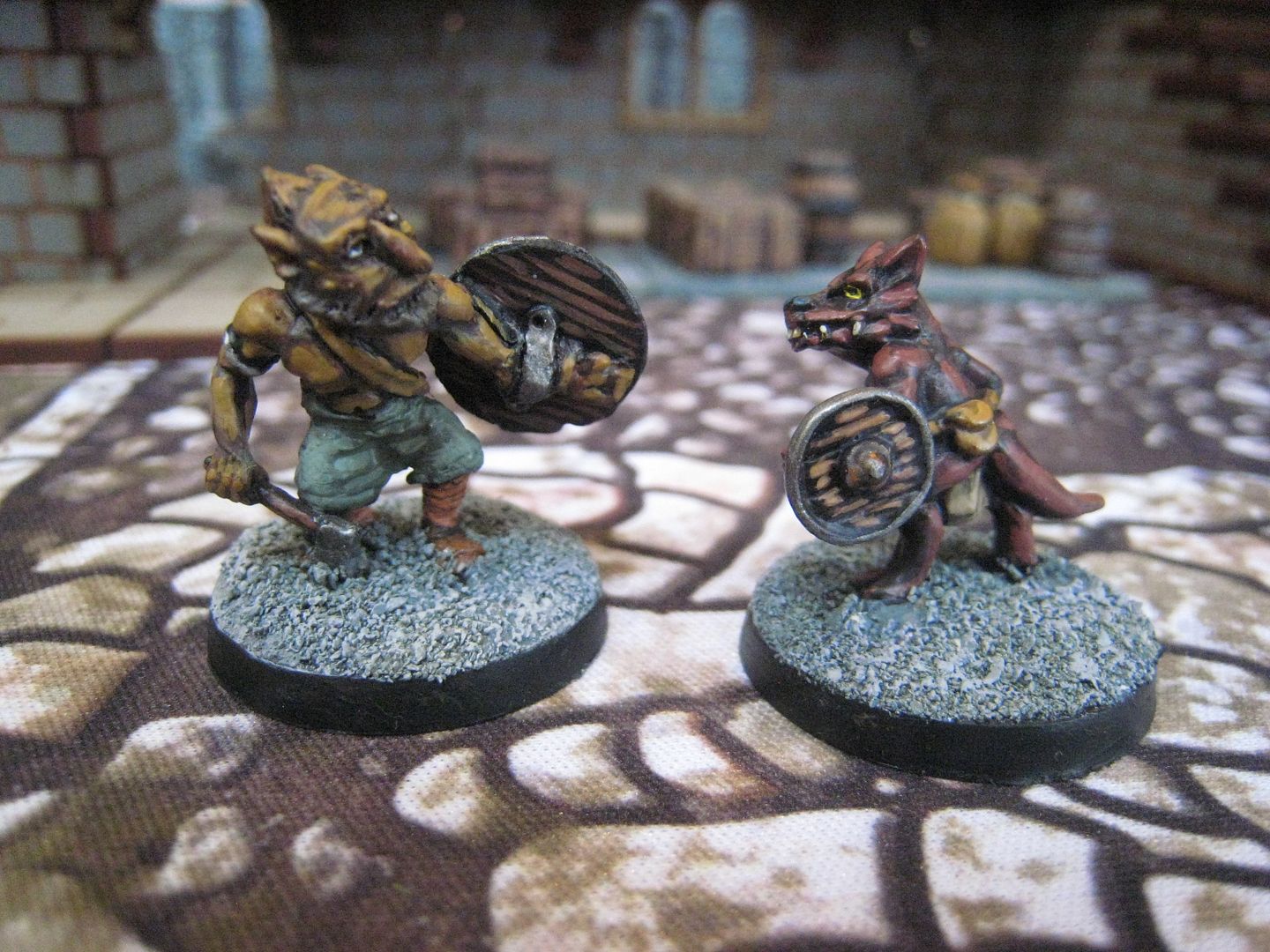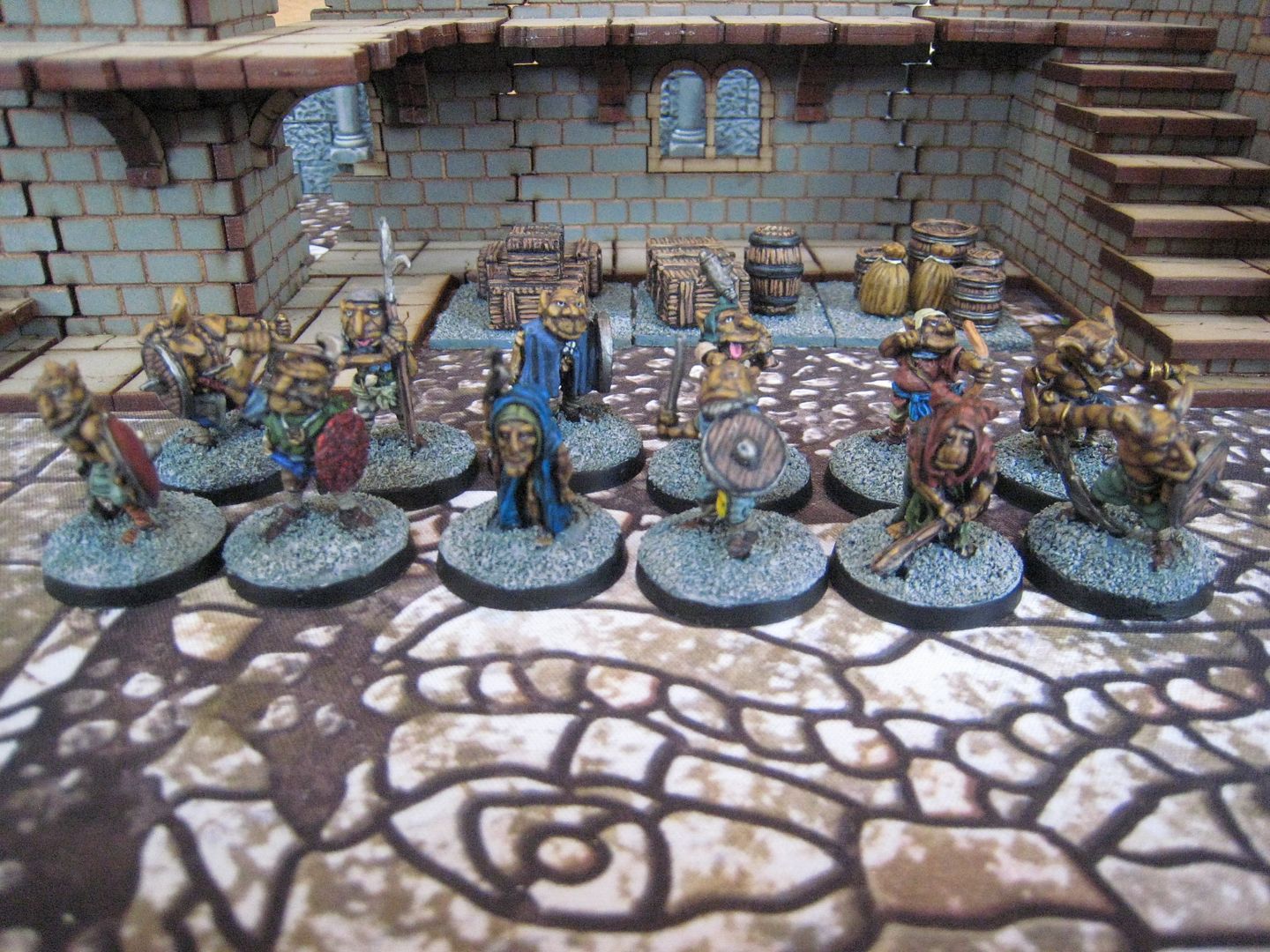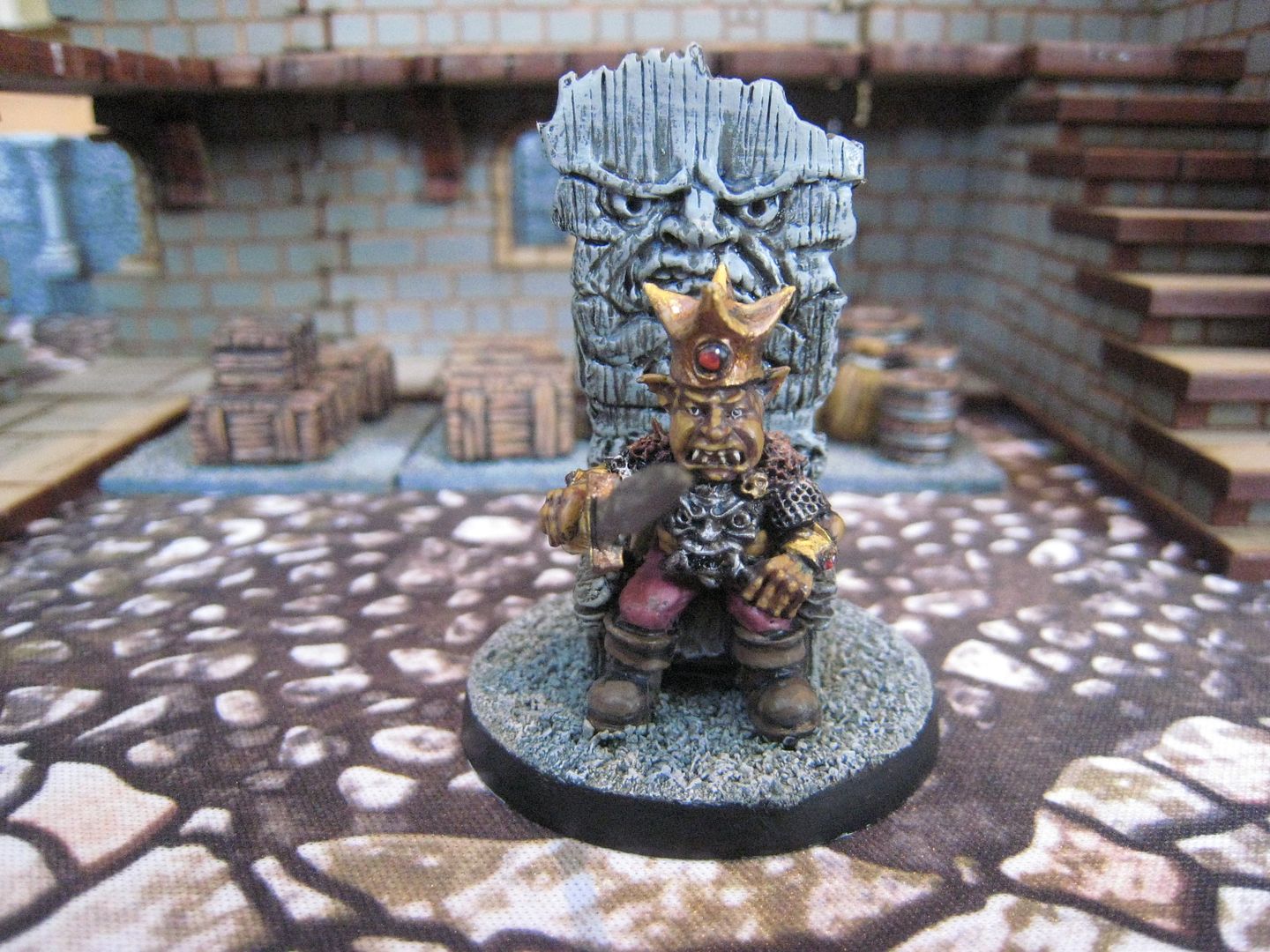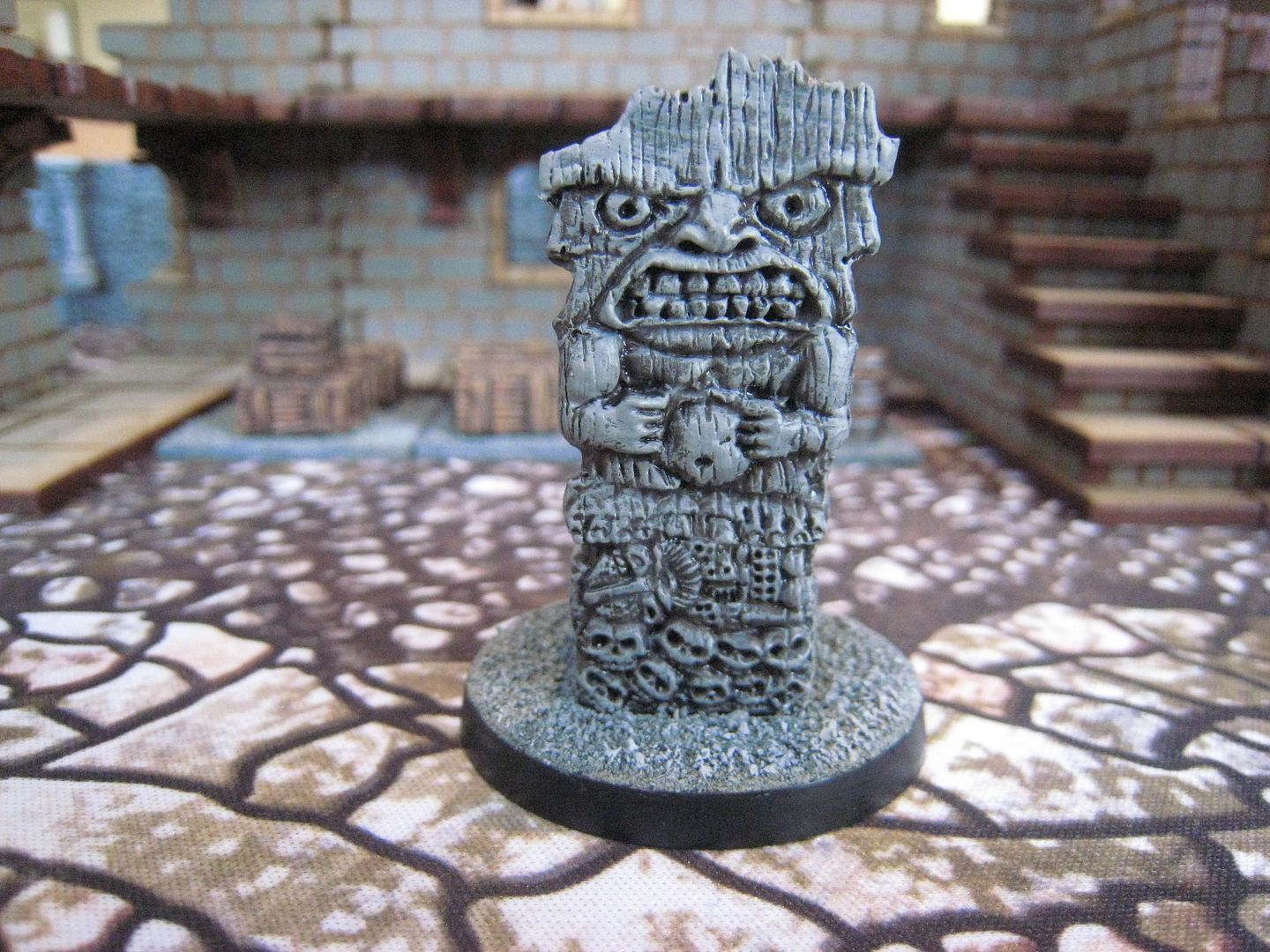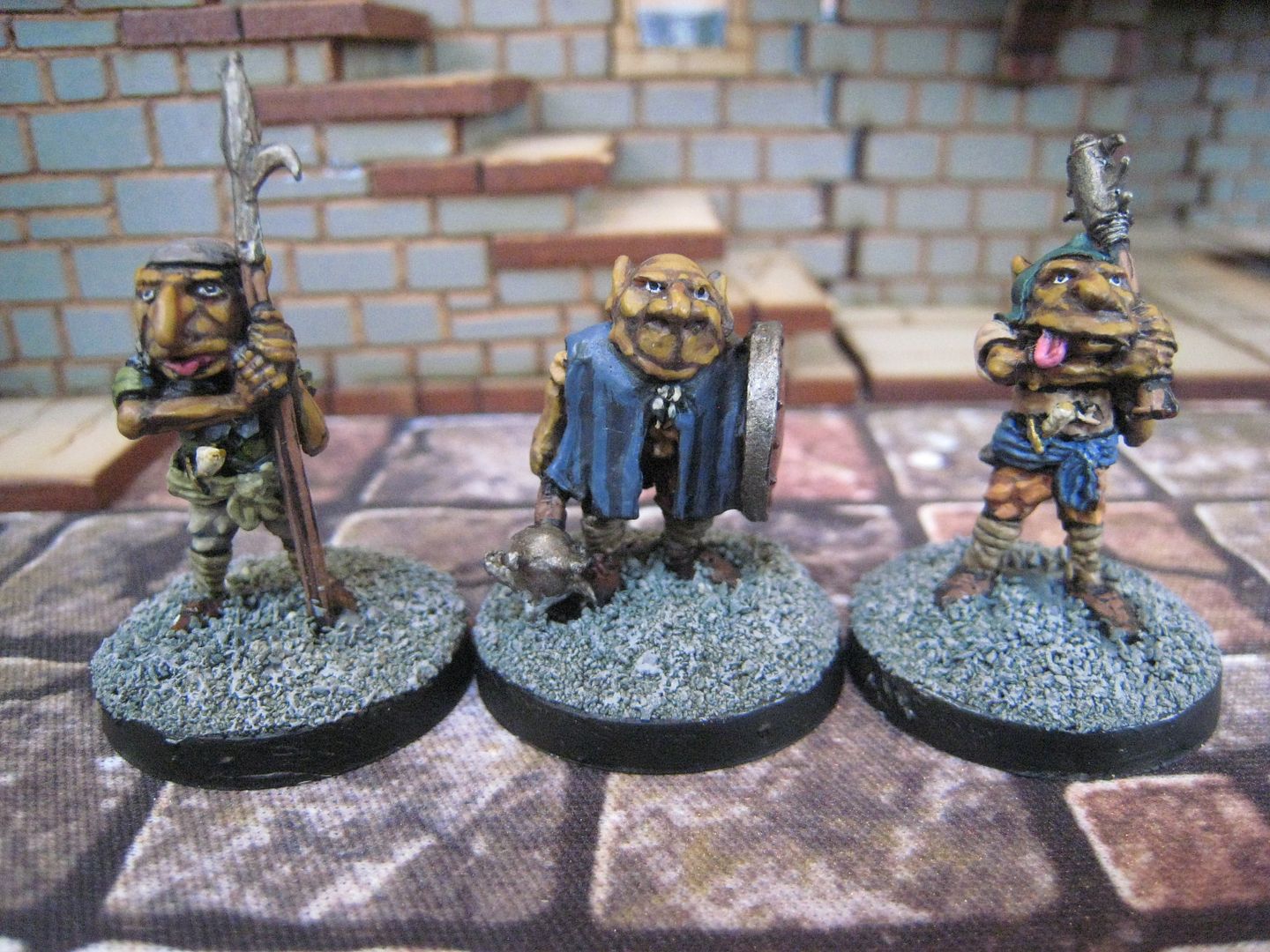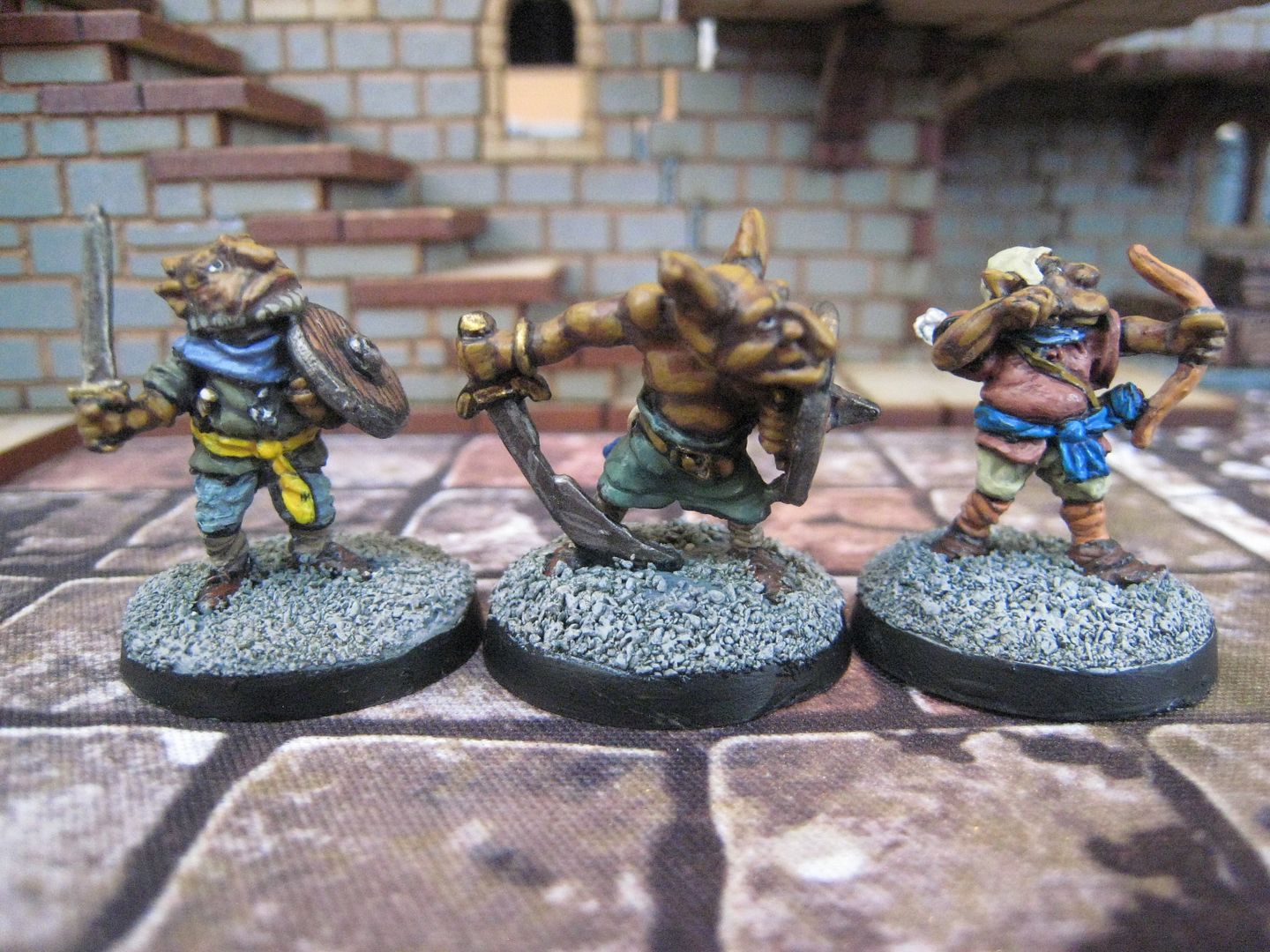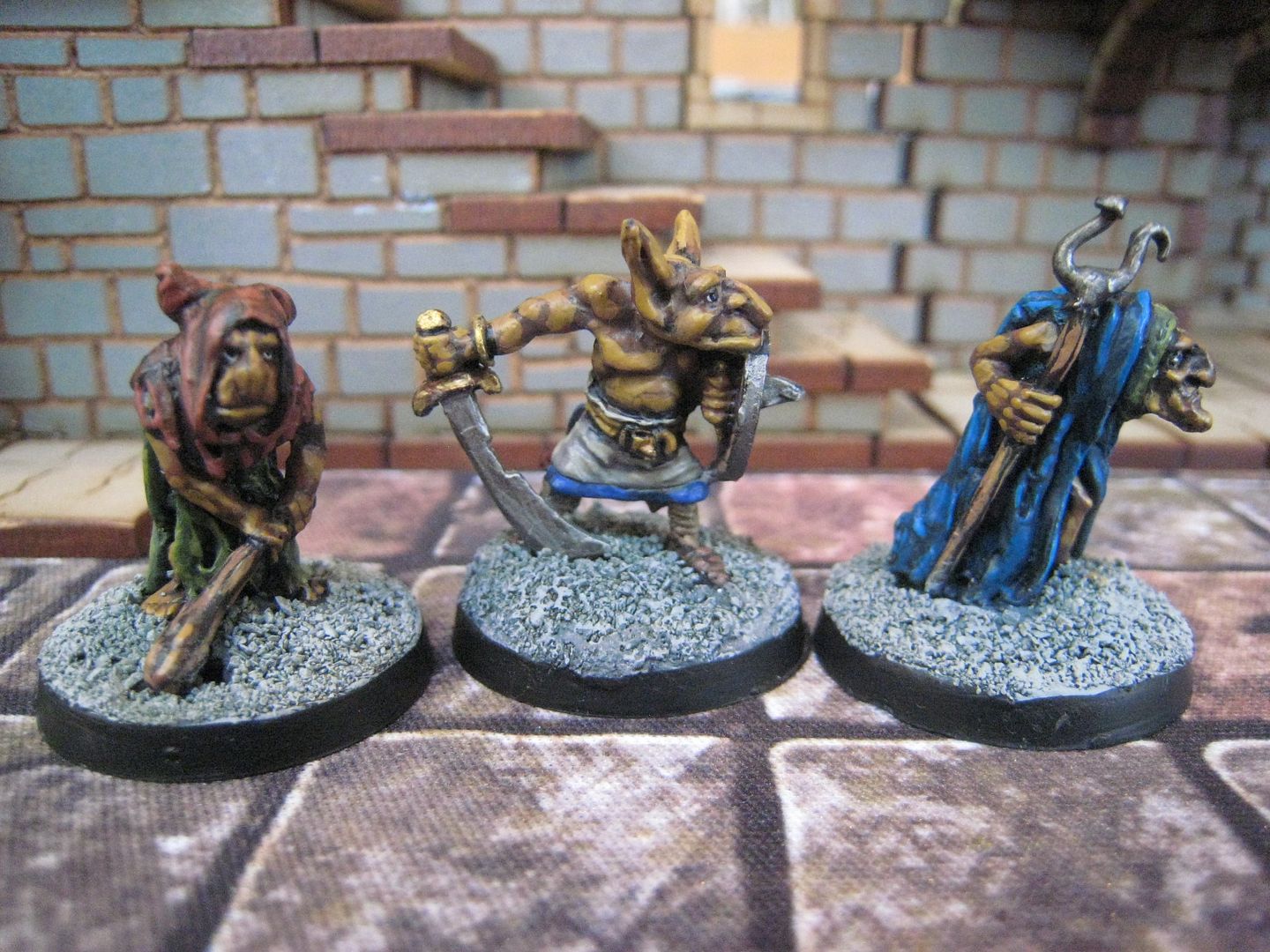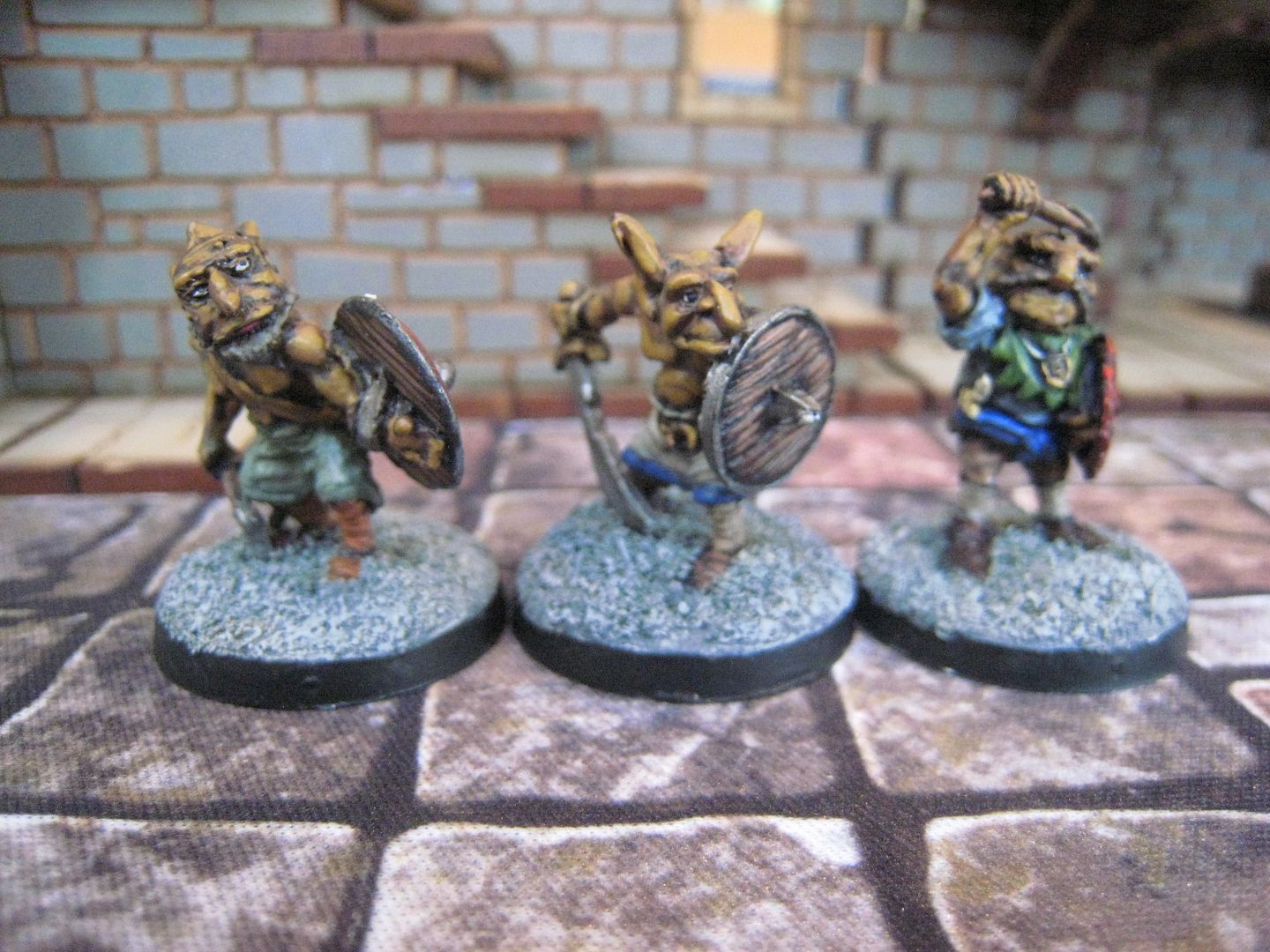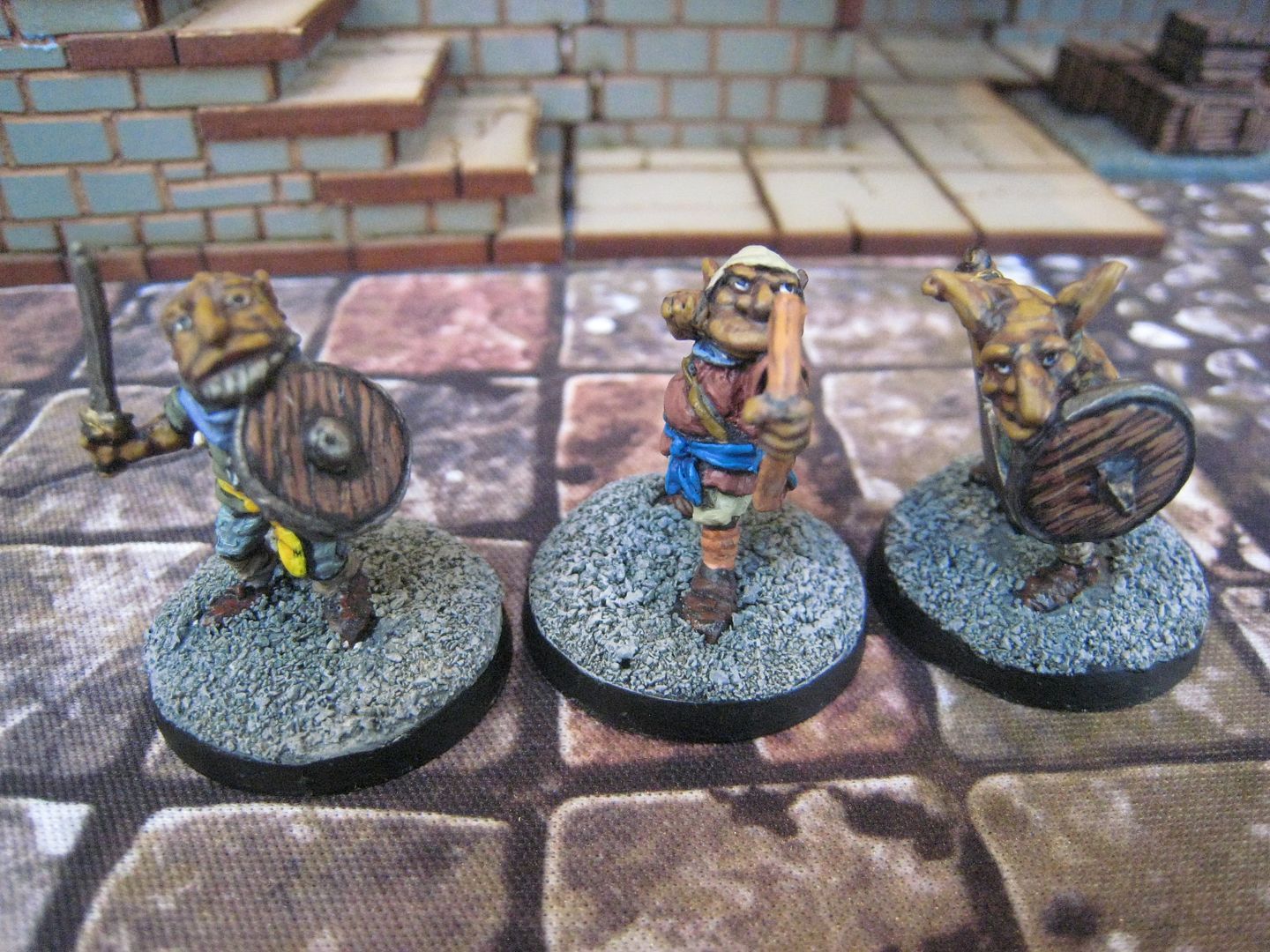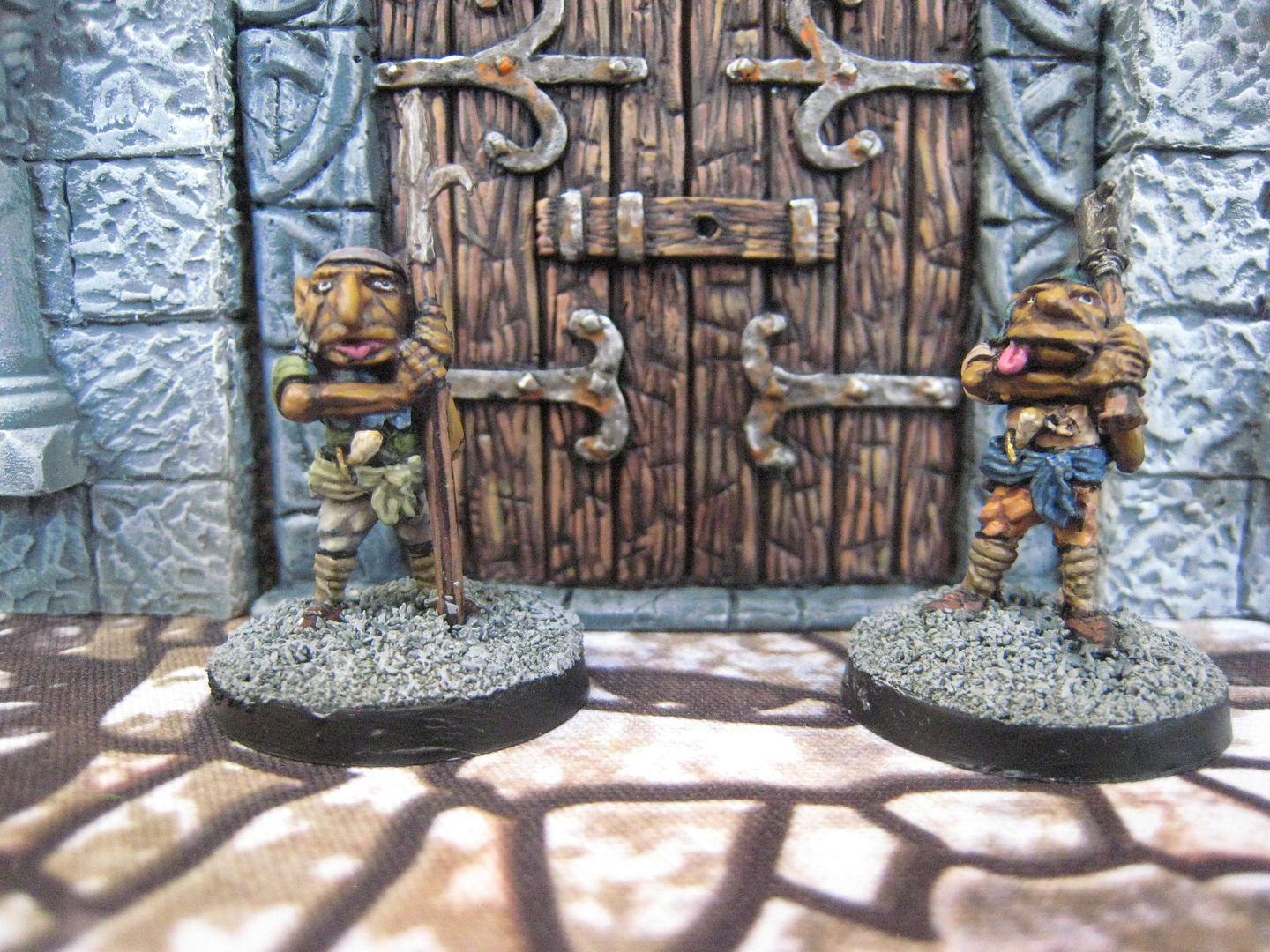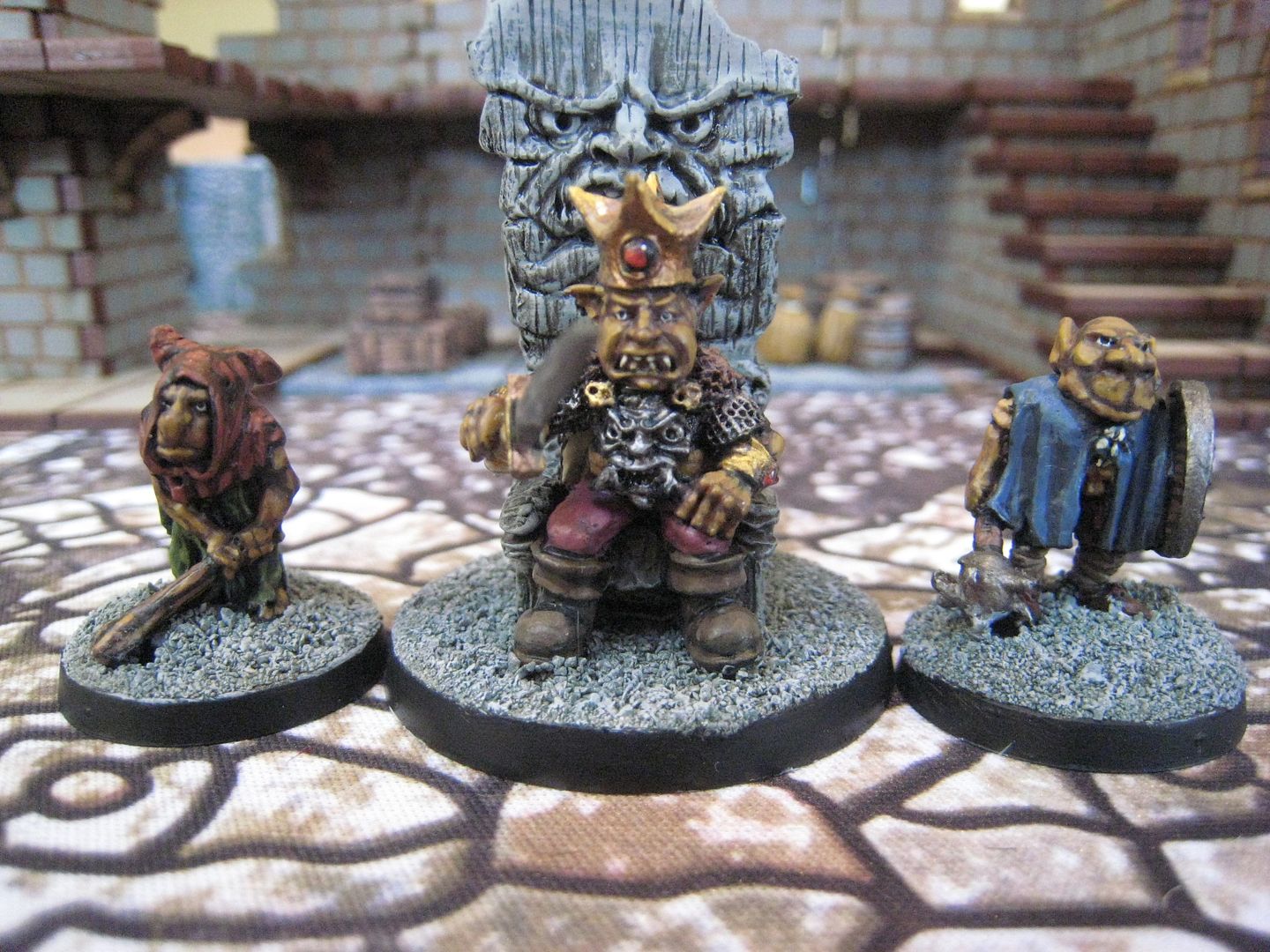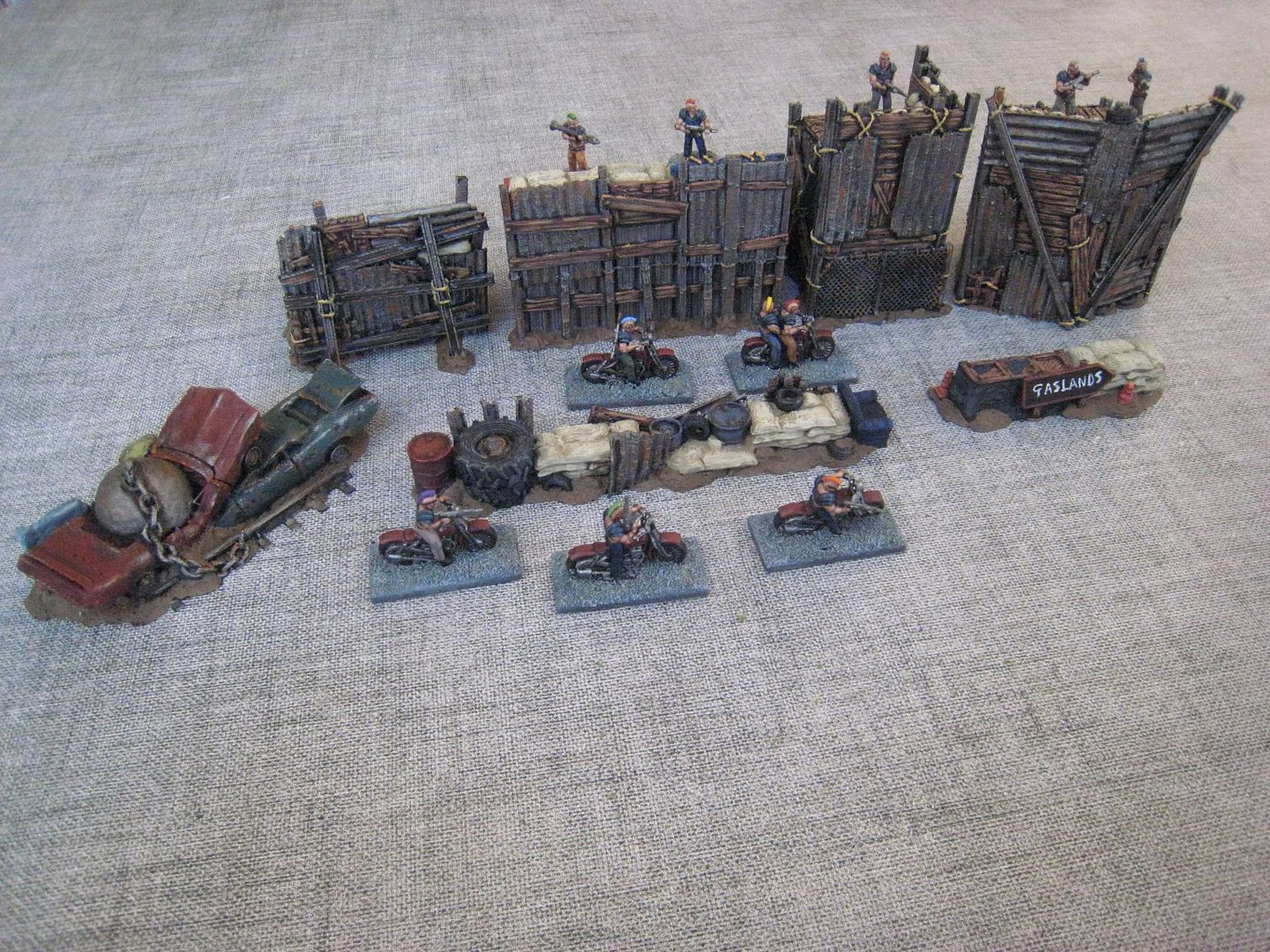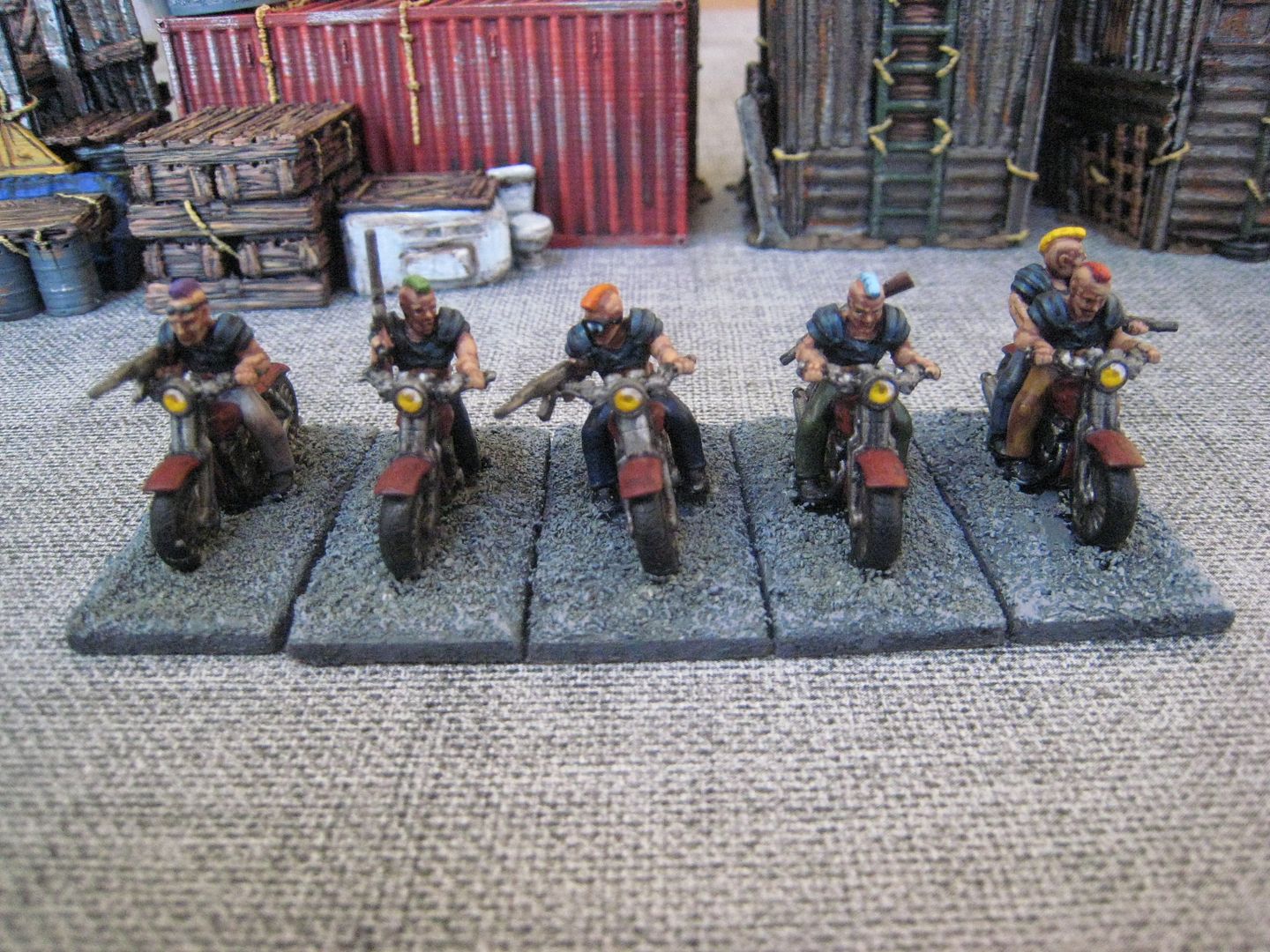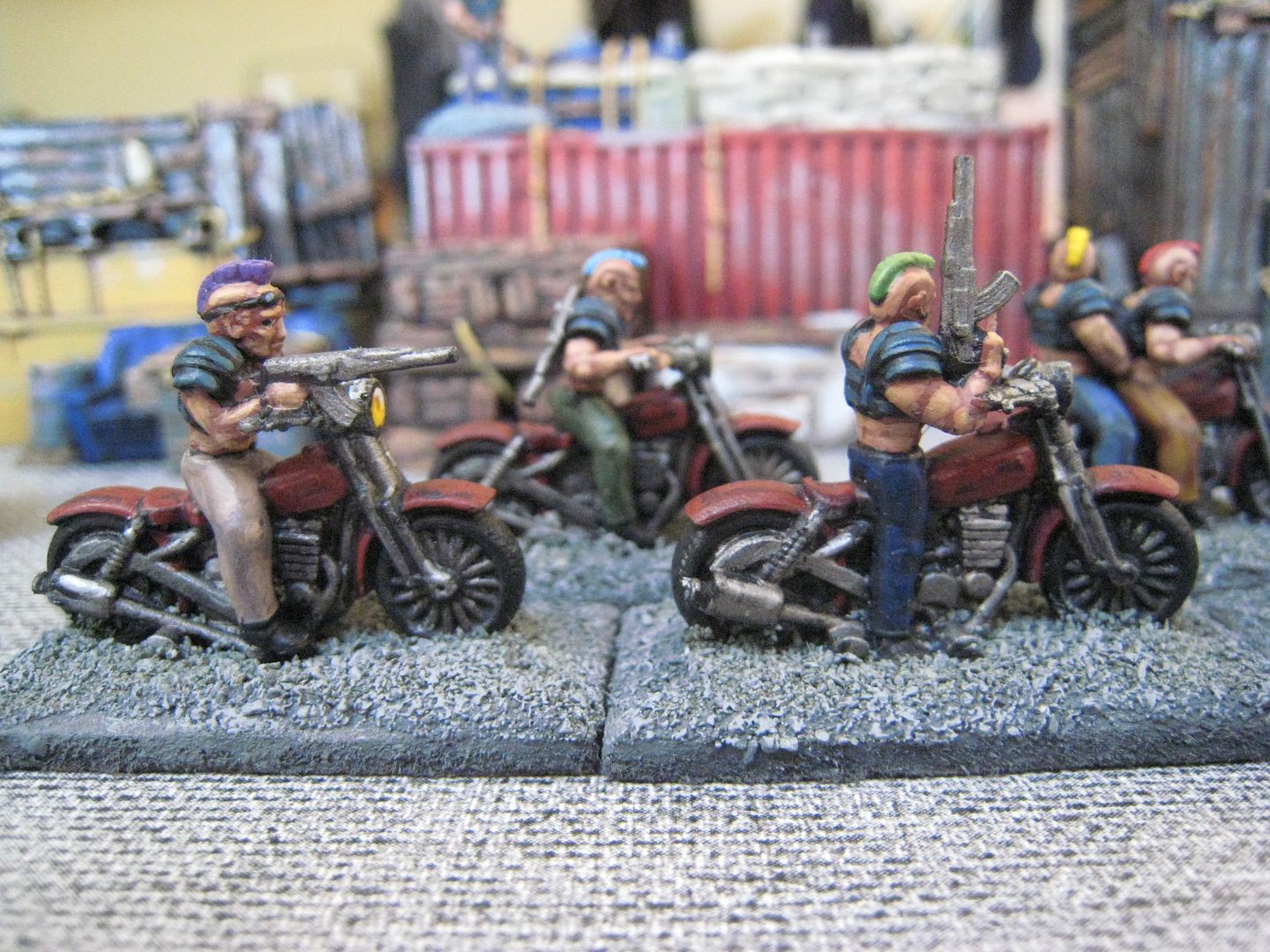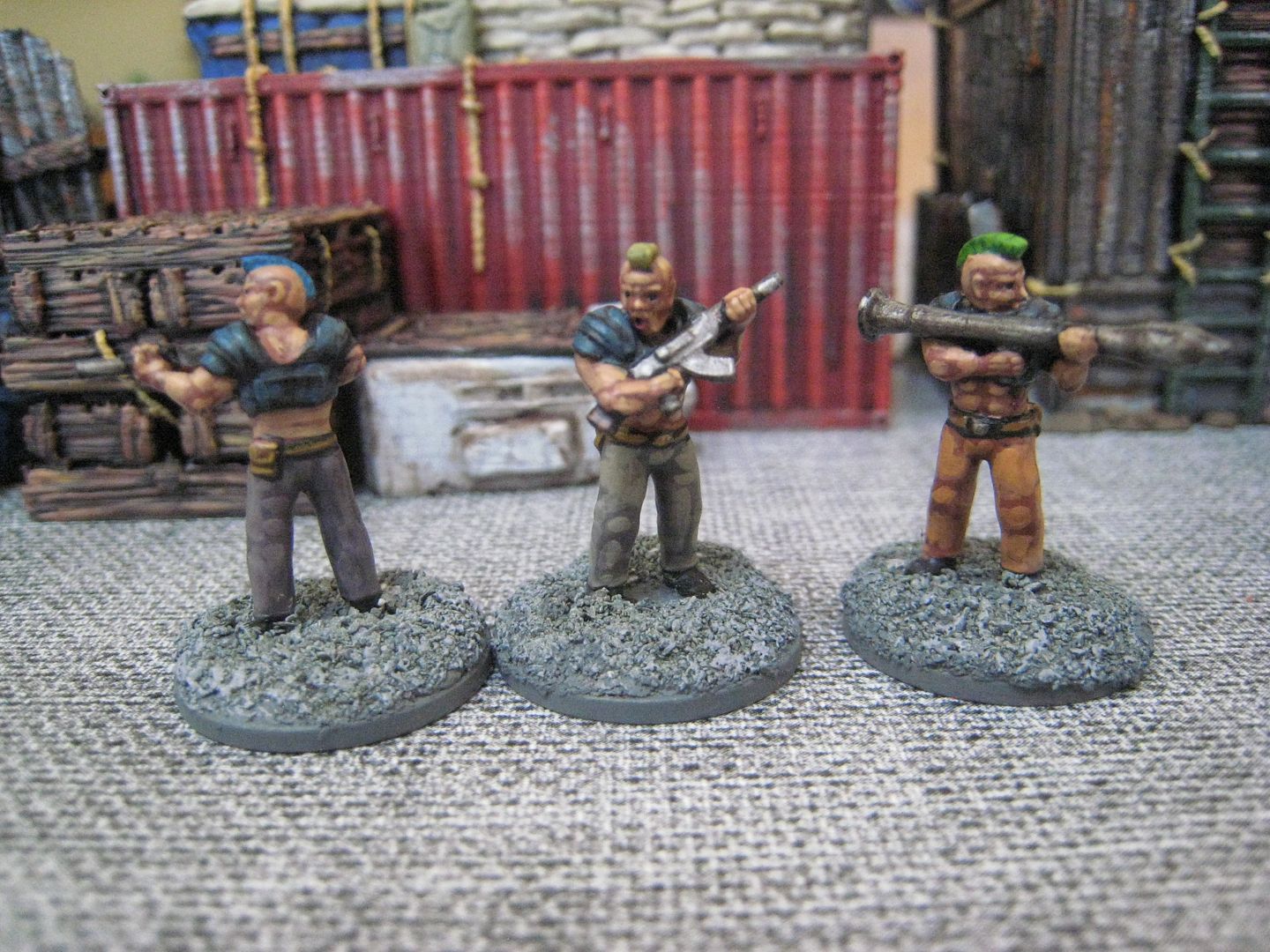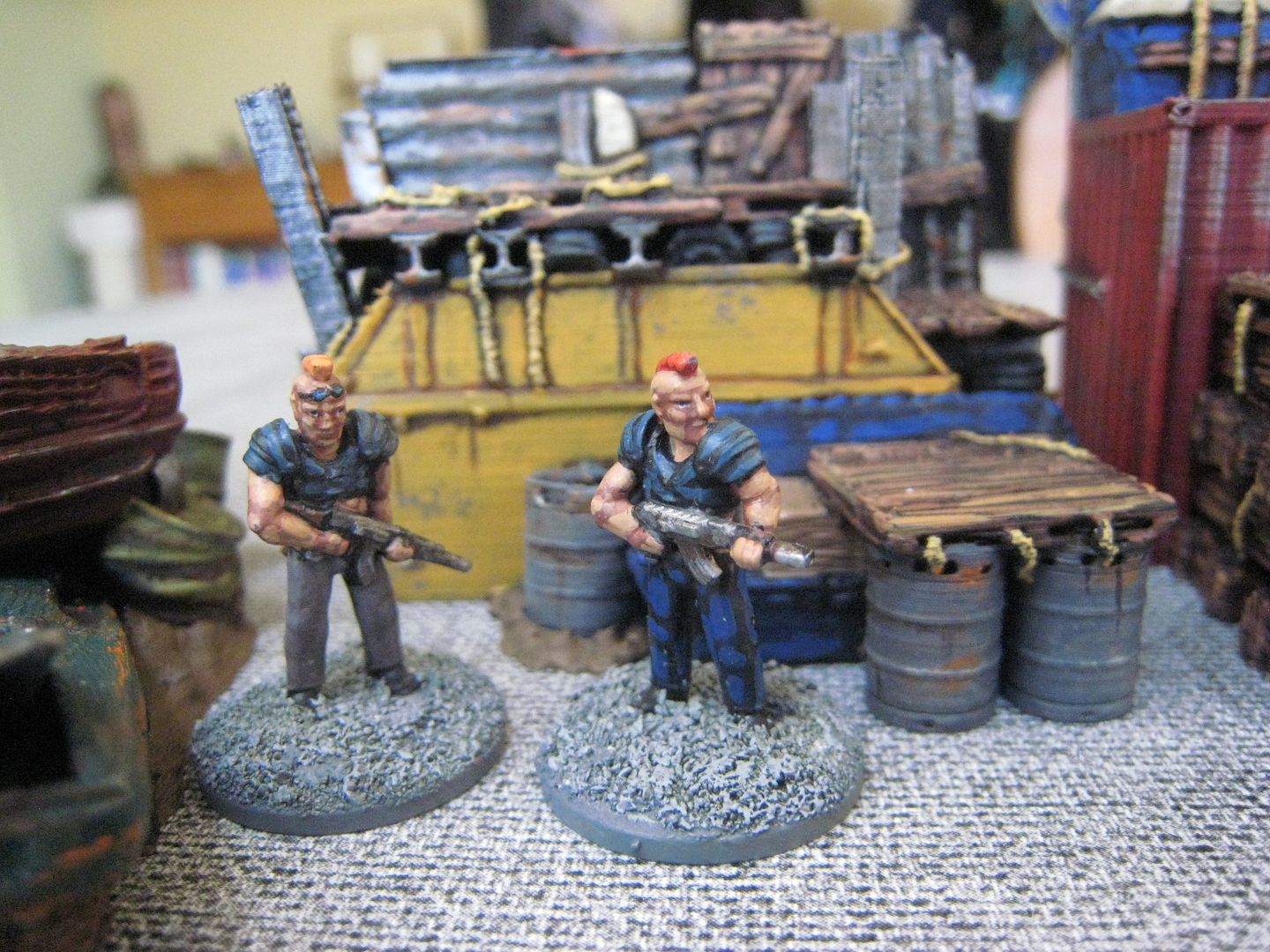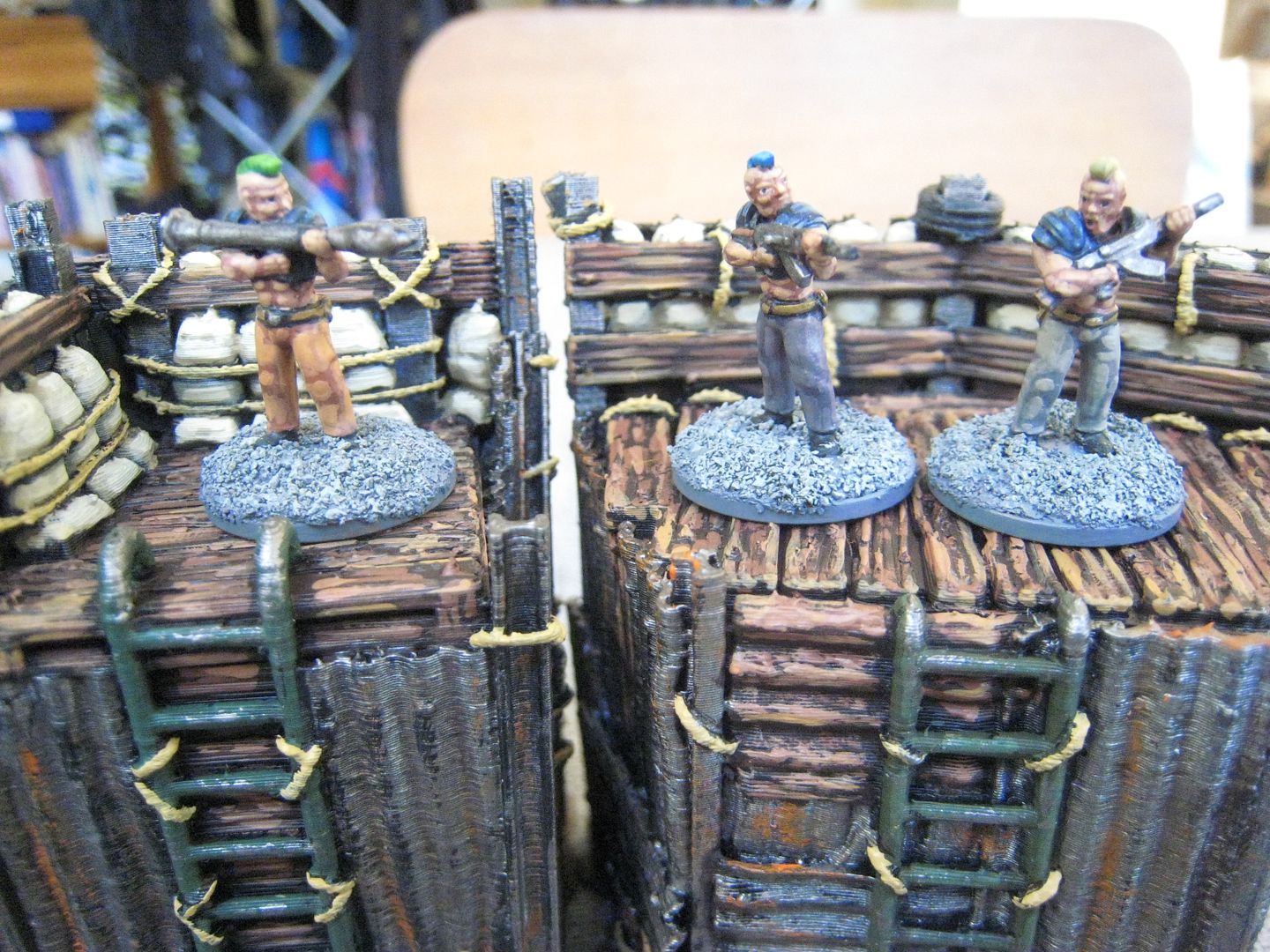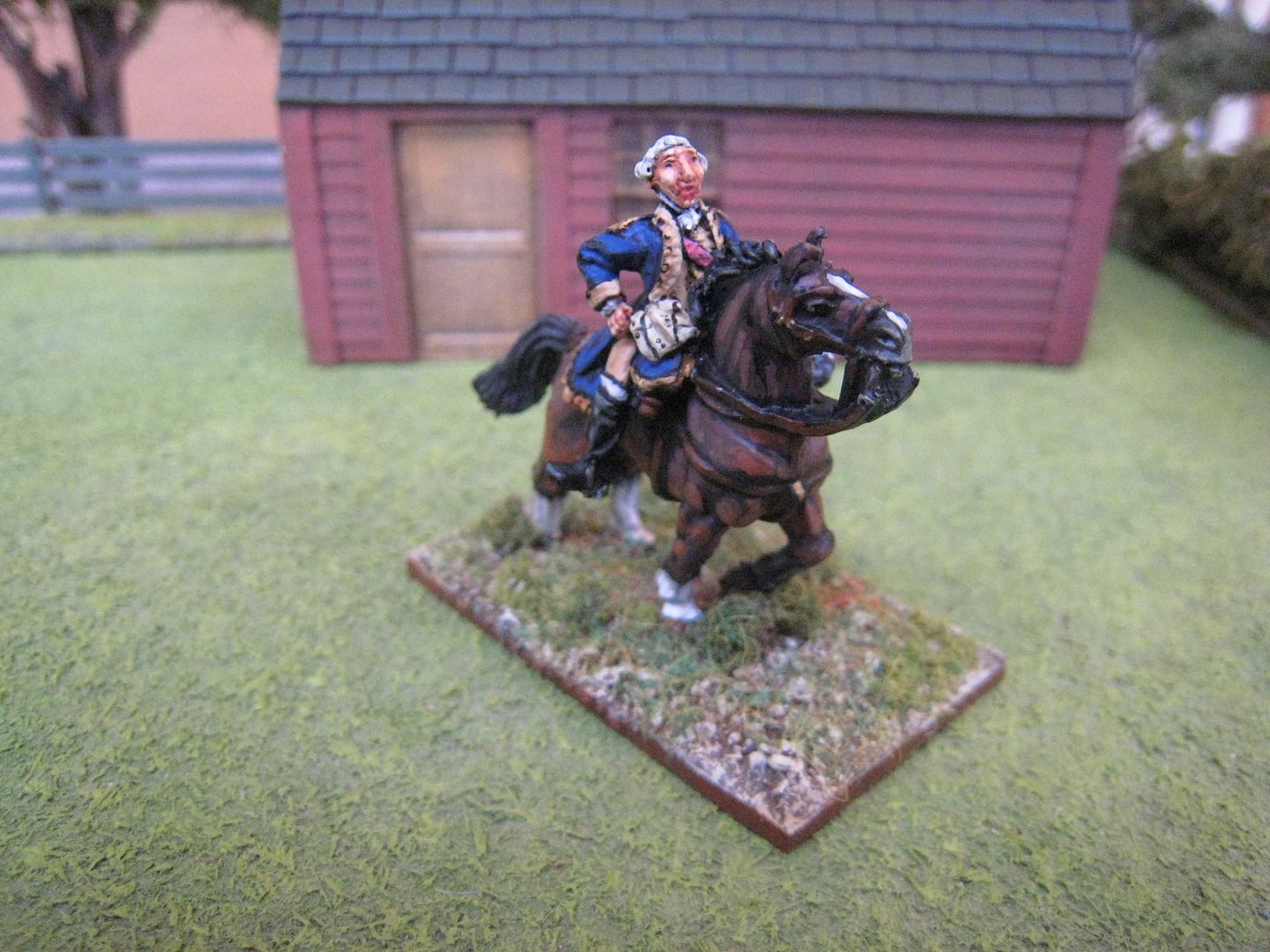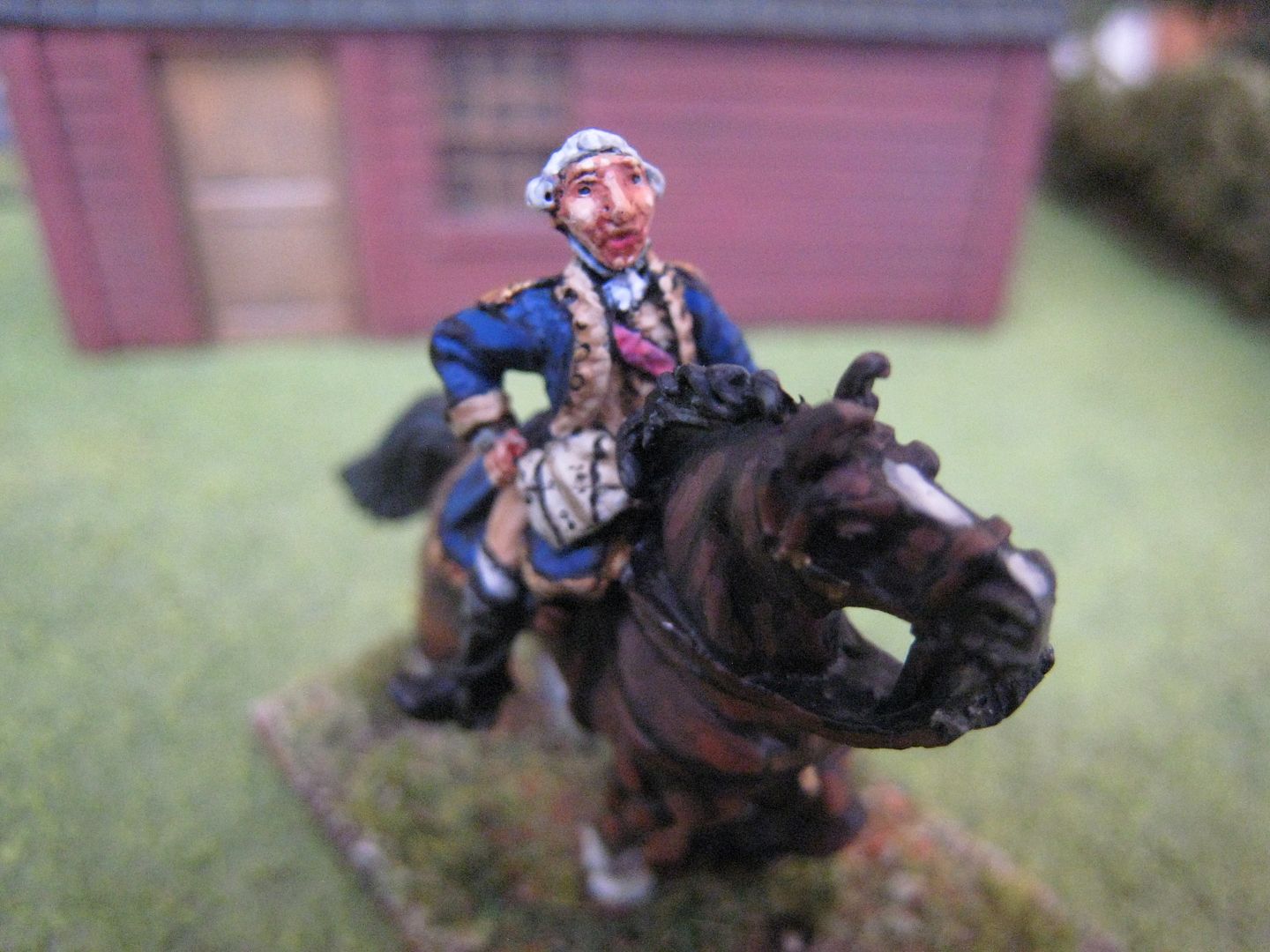Monday, 9 December 2024
7TV - WW2 (1)
Tuesday, 3 December 2024
7TV - Fantasy (3)
8 figures. Painted October 2024.
Monday, 2 December 2024
7TV - Fantasy (2)
It was very satisfying painting figures that I've owned for so long. I wish I could remember why these weren't already painted, as I tended to paint most of the stuff I bought as a teenager. Most of my gaming in those days was Warhammer Fantasy Roleplay, as opposed to large battles; so maybe I just never needed these for any actual gaming. The figures do show their age - and I bet the sculptors had a lot of fun seeing who could make a nose which looked most like a....different part of male anatomy. Some of the Greater Goblins have beards, and one has a rather odd moustache (unless it's supposed to be rivulets of snot). Of course the key question for painting goblins is whether to do green or brown flesh. I decided to go with the more traditional "Tolkein-esque" leathery brown, mainly because I thought that would be easier to paint (although I do have some green goblins in my collection). I used a triad of Coat-d'Arms paints: "Chestnut Brown 219", "Hairy Brown 120" and "Barbarian Leather 116"; and then a very light final highlight of Citadel "Balor Brown".
13 figures, 1 throne and a gate. Painted October 2024.
Sunday, 1 December 2024
7TV - Fantasy (1)
9 figures. Painted May 2024.
Monday, 18 November 2024
Gaslands (1)
And now for something completely different..."Gaslands Refuelled" is an Osprey game that I've been playing with the boys. "The game of vehicular mayhem" is, I think, how it's marketed, and it's a sort of Mad Max meets Car Wars (or Battlecars - does anyone else remember that GW effort?) game. It's mainly about building tooled-up cars and racing them; but here are some terrain items and 20mm "punk infantry" that I bought off ebay. I haven't quite worked out how "infantry" feature in the game, but these were fun to paint. Next on the list will be some punk figures that hang out of / stand on the cars themselves. I also bought a similar set of, er, armed nuns... which I haven't painted yet. I have a lot of cars that I've picked up here and there (usually while the boys are looking at the latest PS5 games or whatever - if they leave a toy shop with something then I'll usually have at least one Hot Wheels or Matchbox car I think will be good for Gaslands). Hugo (who turns 15 in 4 weeks - crikes) is very into DC comics at the moment, and has decided that his new Gaslands "fleet" will be various Batmobiles.
The 20mm figures and bikers come from The Summoning Circle, and the terrain items are from The Artificer's Forge. All these items were 3D-printed and easy to paint. The punks reminded me of the adversaries in "Mad Max 2" and I deliberately painted these figures in a kind of uniform. The black body armour is highlighted with GW Dark Reaper and Thunderhawk. I also used GW flesh paints rather than my usual Foundry ones - just a base of Bugman's Glow followed by highlights of Cadian Fleshtone and Kislev Flesh. I tried to give each figure a different colour mohawk to ease identification. This isn't the end of the punks. I also have to do a couple of motorcyle/sidecar combos and the figures which go in the cars themselves. I really enjoyed painting the terrain, which I think is well-sculpted and quite clever in terms of the stuff they've put together to make the ramparts. In fact, part of the fun is working out what it is you have to paint - whether a fridge, a toilet, a traffic cone, a sofa etc. I used GW technical paints to show rust, dirt, water damage etc. I believe these items come in both 20mm (as here) and 25mm/28mm. So the larger size would be suitable for games like 7TV Apocalypse. I recently bought some more terrain items; so when I've painted those I'll set up a Gaslands game and take some photos of the whole collection in action.
My next posts will be a run of 7TV miniatures (including "Dad's Army") with some Maori and Napoleonic French and Ottomans. I'm then thinking of spending December back on the AWI, with two versions of De Lancey's Brigade.
5 motorcycles, 5 infantry and various terrain items. Painted August 2024.
Wednesday, 13 November 2024
Brigadier-General the Marquis de Lafayette
In the Caliver/"British Grenadier!" scenarios, Lafayette appears as a brigadier in the "early Monmouth" and Yorktown scenarios. So when I found him in my Old Glory lead-pile I thought it was time to add him to my collection of personalities. This is an, er, interesting sculpt. I can see what Old Glory are trying to do, and the figure does have the long, oval face that one sees in contemporary portraits. I think they've captured a youthful look, but I can also see how others might think this sculpt is a bit odd. I assume that it's a map he's not quite carrying (it looks like it's just resting on his thigh) - also a bit odd. Anyway, here he is.
This is the last bit of AWI for a while. I'll be filling the time until the next lot of AWI stuff by posting about the various other projects I've been working on, some of which aren't even historical! That should increase the rate of posts a bit.
1 figure. Painted September 2024.
